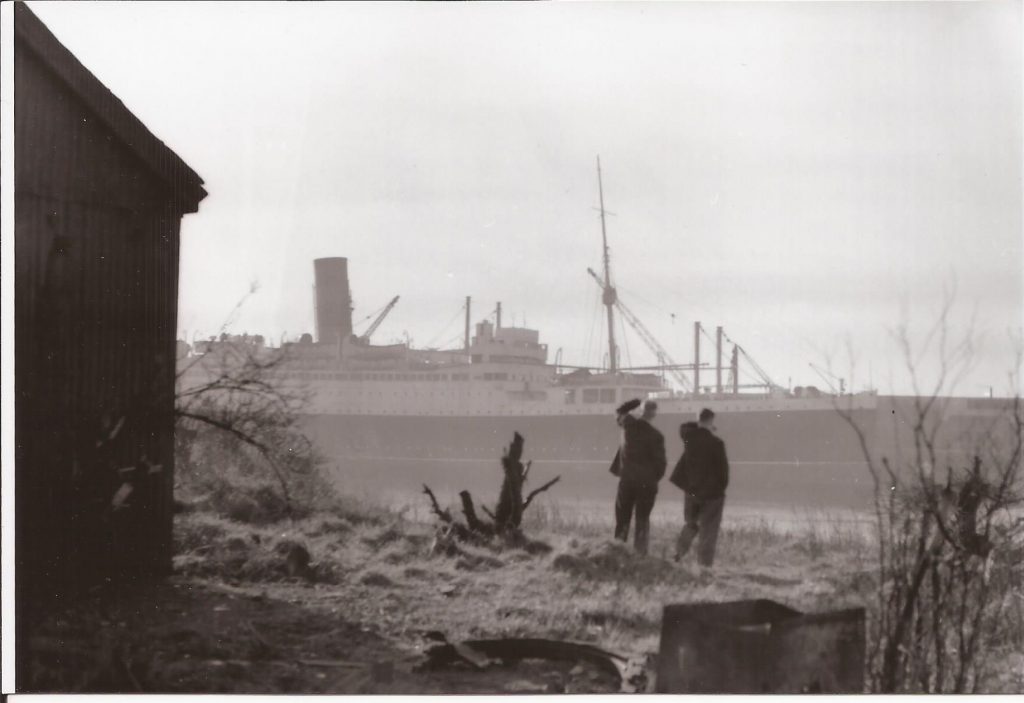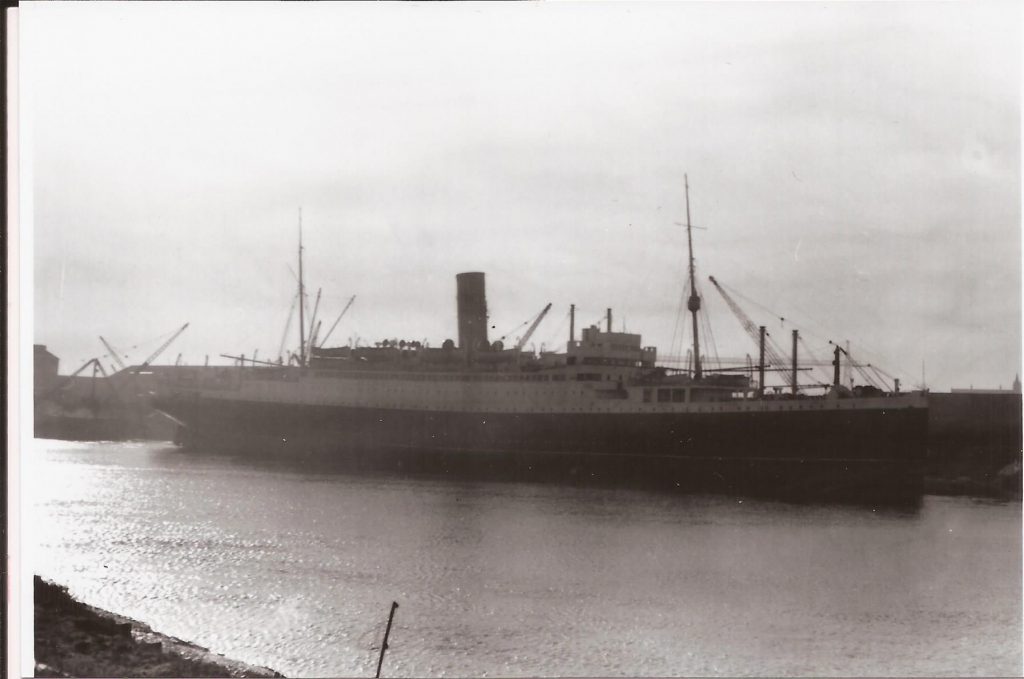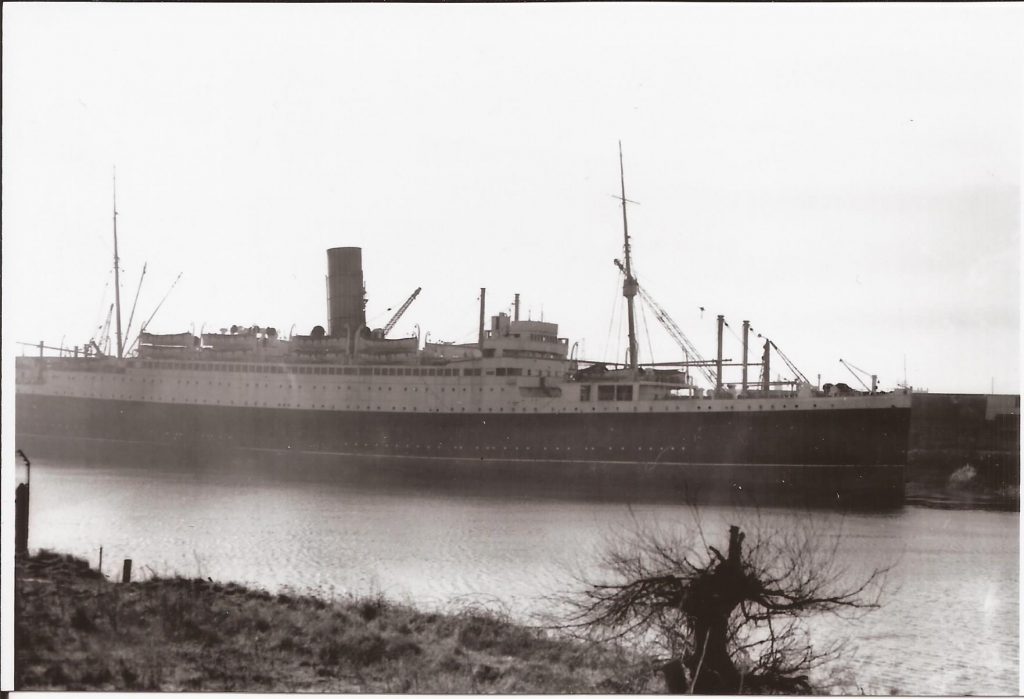RMS Ascania II (1925-56)
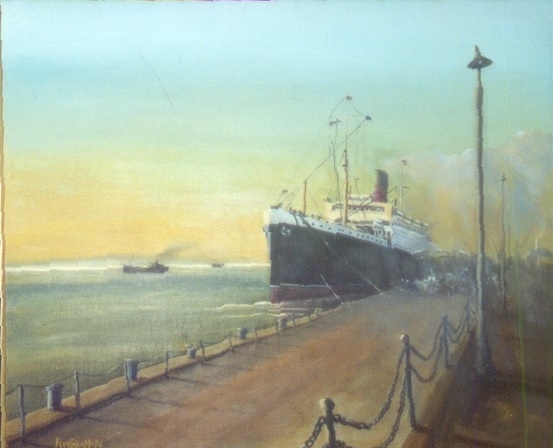
The RMS Ascania was the second Cunard vessel to bear the name.
Cunard launched a second trio of intermediate liners in the 1920’s; these were the Aurania, Alaunia and Ascania. As part of their post-war building programme Cunard built three 14,000 ton liners which were oil fired and driven by double reduction geared turbines. The Ascania and Alaunia were specifically built for the Canadian trade.
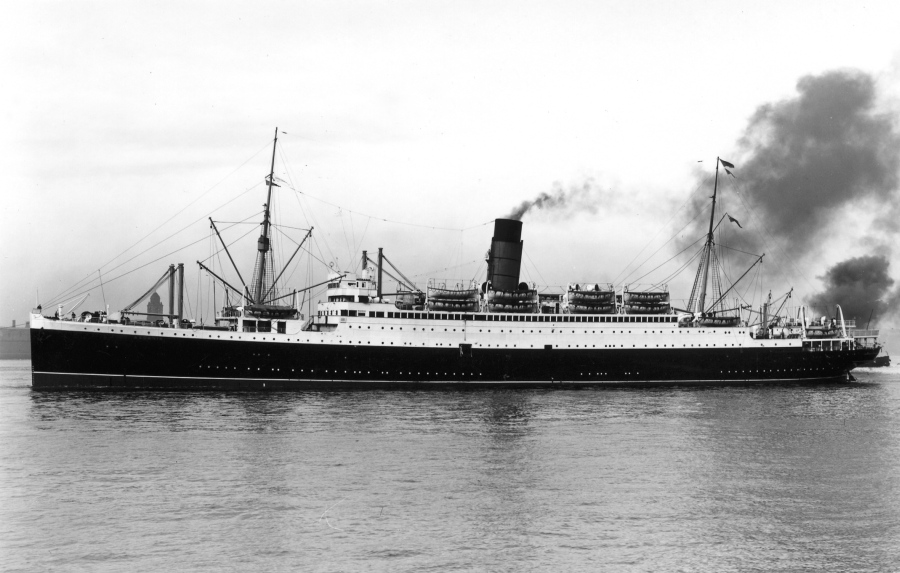
The RMS Ascania in 1925
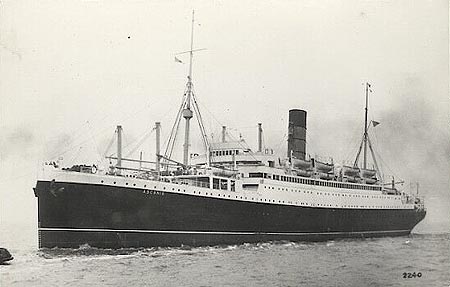
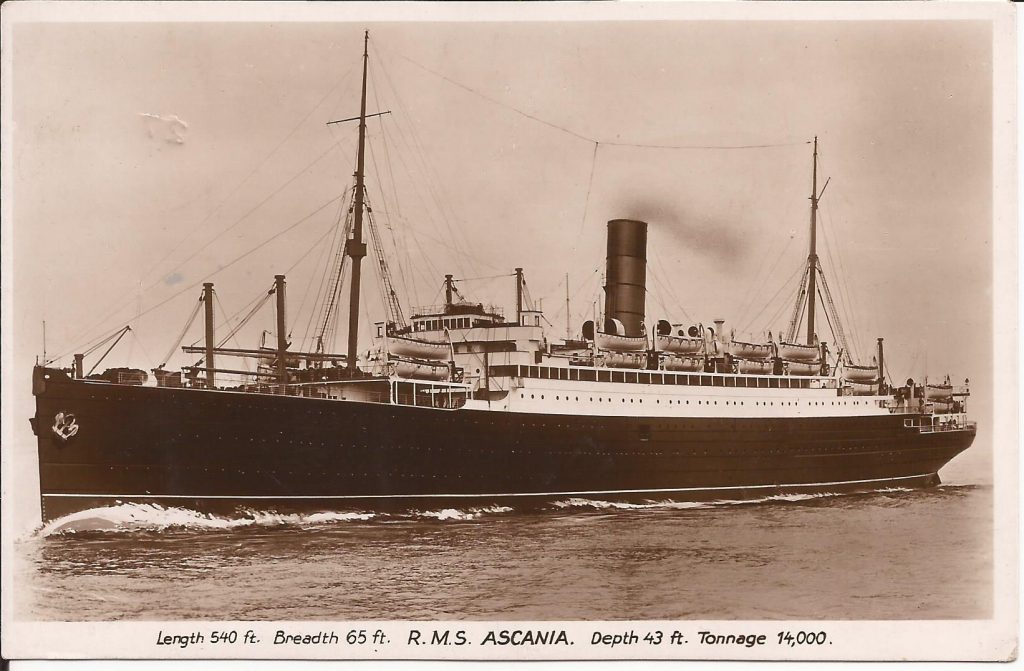
The New Ascania Cunard line
1925 saw the addition of three new A Class liners, Aurania, Alaunia and the Ascania, which further extended the Cunard Line in this, the intermediate category. The first of these three was the Ascania and she was not only new, but embodied the latest developments of ship building science and gave a new appreciation of sea going comfort.
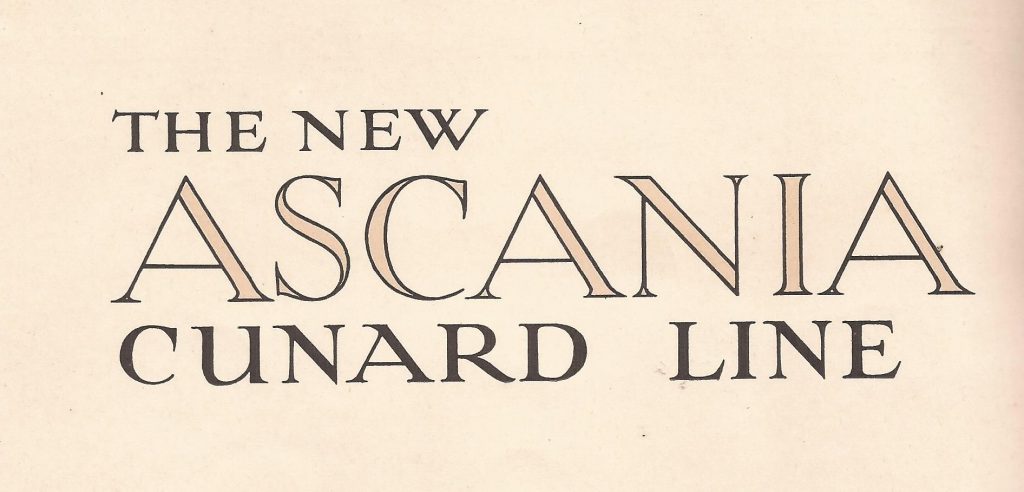
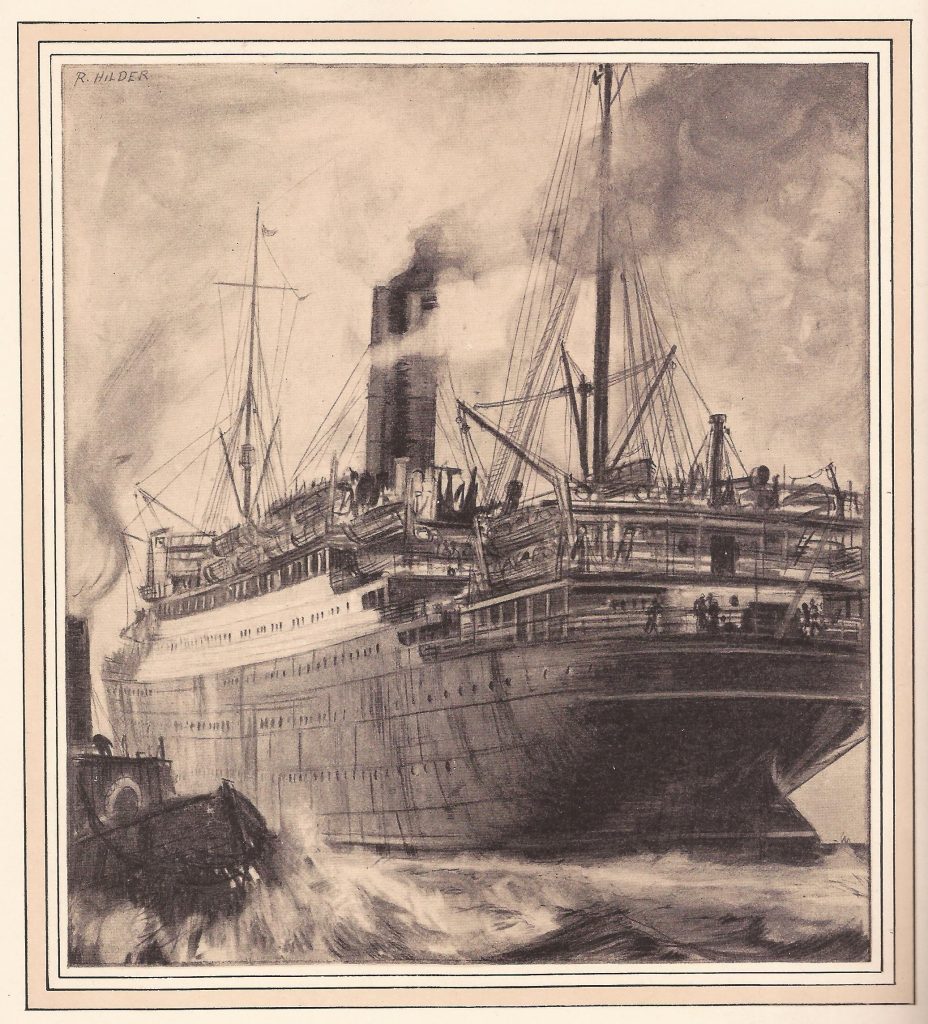
Designed to mainly carry emigrants, the Ascania was divided into two and not the customary three classes of accommodation, cabin and third class. It was because of this that her accommodation was of exceptionally spacious character and her ample spaces were of beautiful design and included the latest in comfort and convenience.
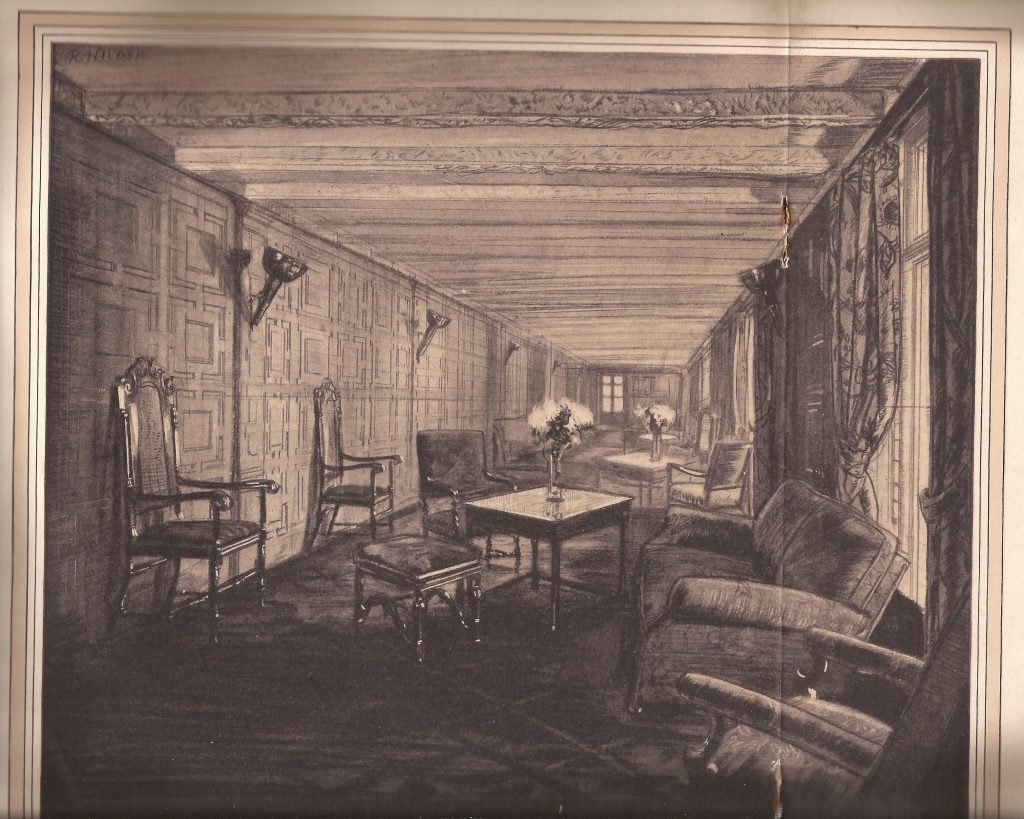
She was advertised as a ship of innovations, with one of the most interesting, being the Long Gallery. This was a unique oak panelled room in simple but effective geometrical design. It ran fore and aft alongside the Promenade Deck and on one side there were broad windows, glazed in a jewel design of leadlight, embellished with stained glass depicting University Coats-of-Arms. The ceiling was hand plastered and the floor, which was laid in red and black ruboleum, had been specially treated for dancing. With wrought iron torches on the walls, charming tapestry curtains and handsome Charles II style furniture, it gave all the dignified beauty and comfort of a baronial hall.
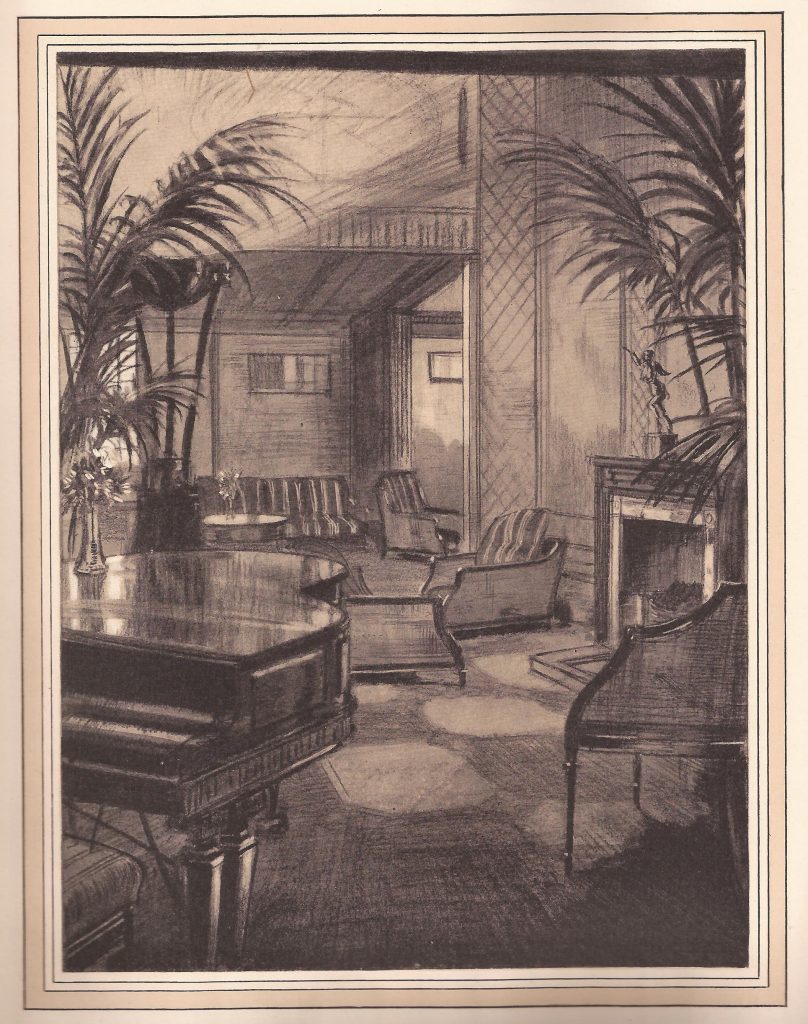
At the forward end of the Long Gallery was the Winter Garden and at the after end, the Smoking Room. The scheme of the former was in polished sycamore with green rustic traceries and the furniture featured elegant chairs and settees upholstered in rose and gold. There were spreading palms and under the coach roof, a beautiful electric torchère, provided the main lighting, altogether the room had a delightful air of brightness.
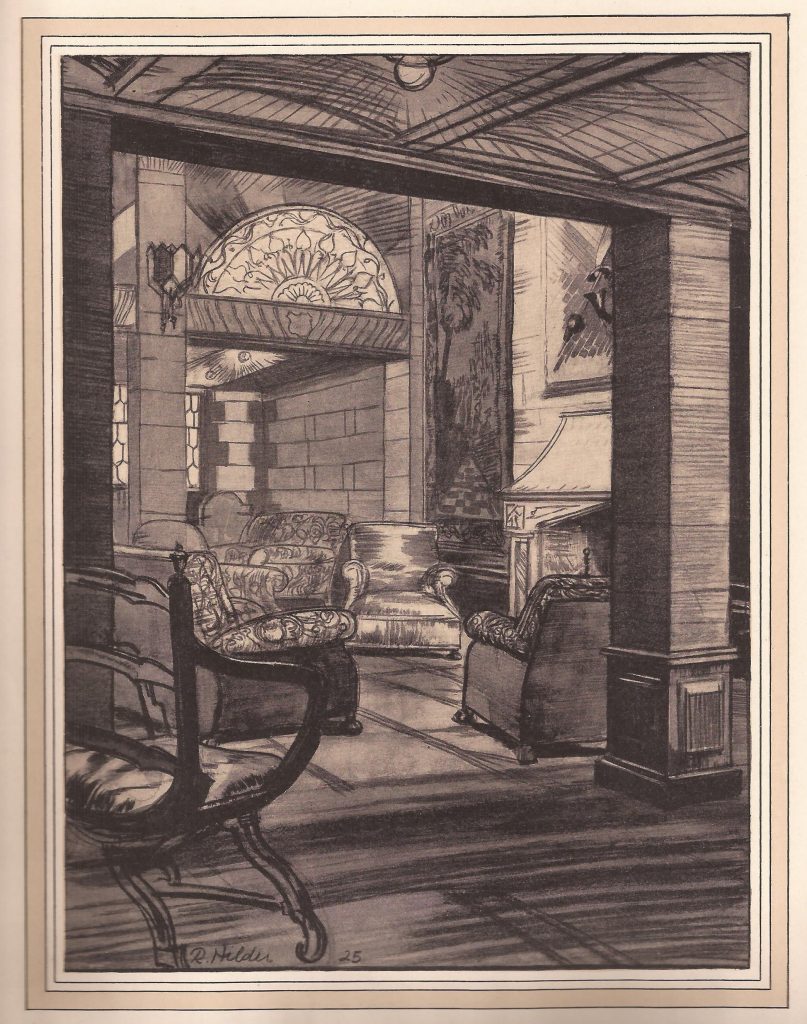
The Smoking Room was one of the most unique of its kind afloat. It was carried out in the style of an Old Italian Palazzo in deep cream and terra cotta stonework; the walls were hung with tapestries and pieces of historical costume and armour. The furniture in this room consisted mainly of modern club, easy chairs and small tables.

Halfway down the Long Gallery was the Drawing Room, essentially a ladies room, it was simply furnished, but nevertheless, extremely comfortable. It was an ideal reading room and there was provided, an excellent library of books. In the corner was a cosy alcove, for writing letters undisturbed.
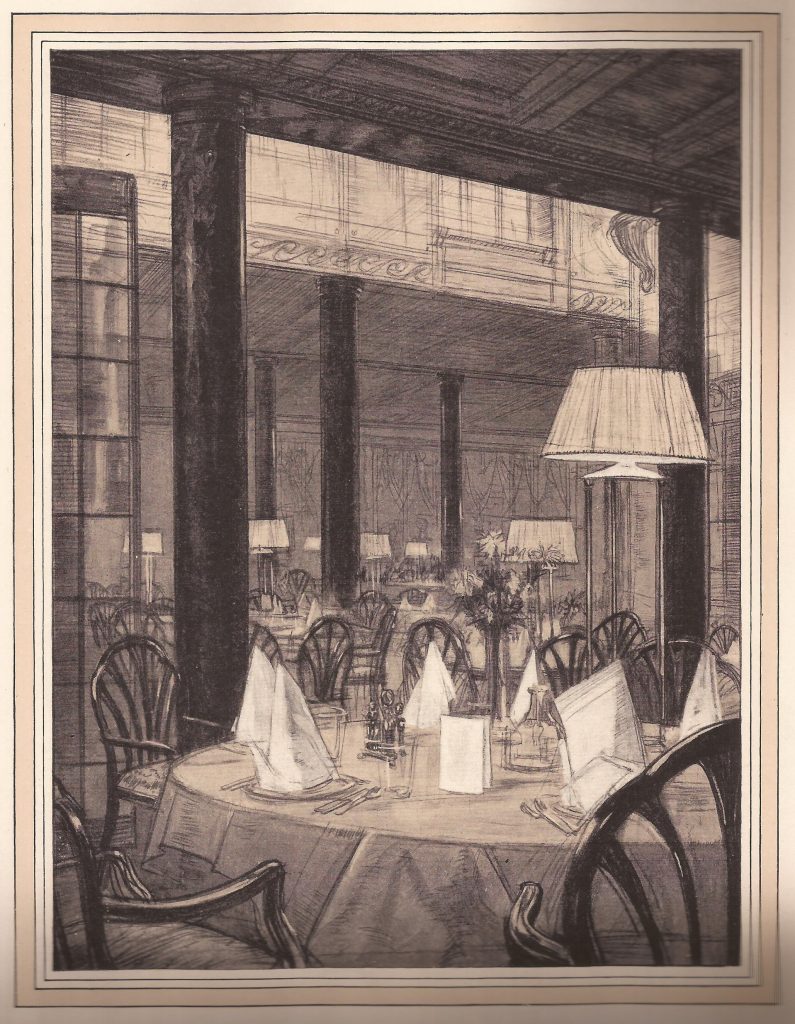
Modern in every possible way, the Dining Saloon was a well-proportioned and decorated from floor to ceiling. It had small tables, each with a novel electric lamp, which were arranged in groups. Immediately joining the Dining Saloon were the kitchens, which were installed with every up to date culinary device, from which to serve the world renowned Cunard cuisine.
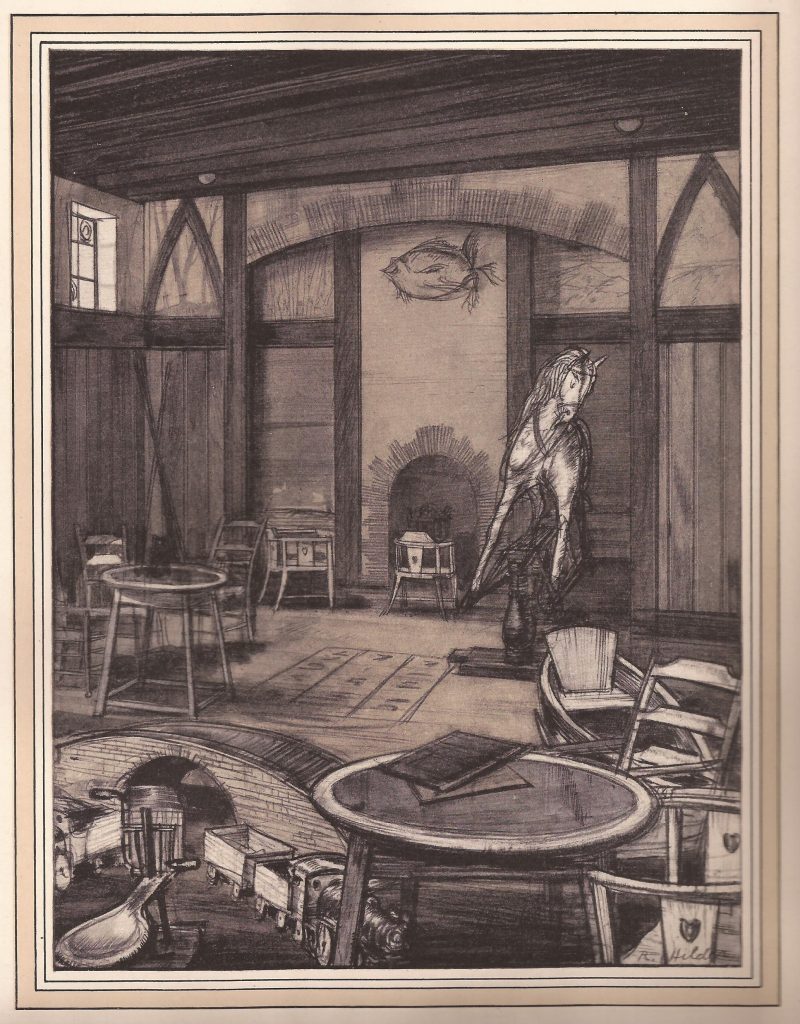
One of the most fascinating rooms was the Nursery. Charmingly decorated with popular friezes and provided with a variety of toys and playthings, it even boasted its own chocolate shop. At the end of the Promenade Deck, was the Gymnasium, which enabled passengers to take a brisk ride on the mechanical horse, scull, try the new ingenious running track (or running machine as we would call it now), or just exercise in the fresh sea air.
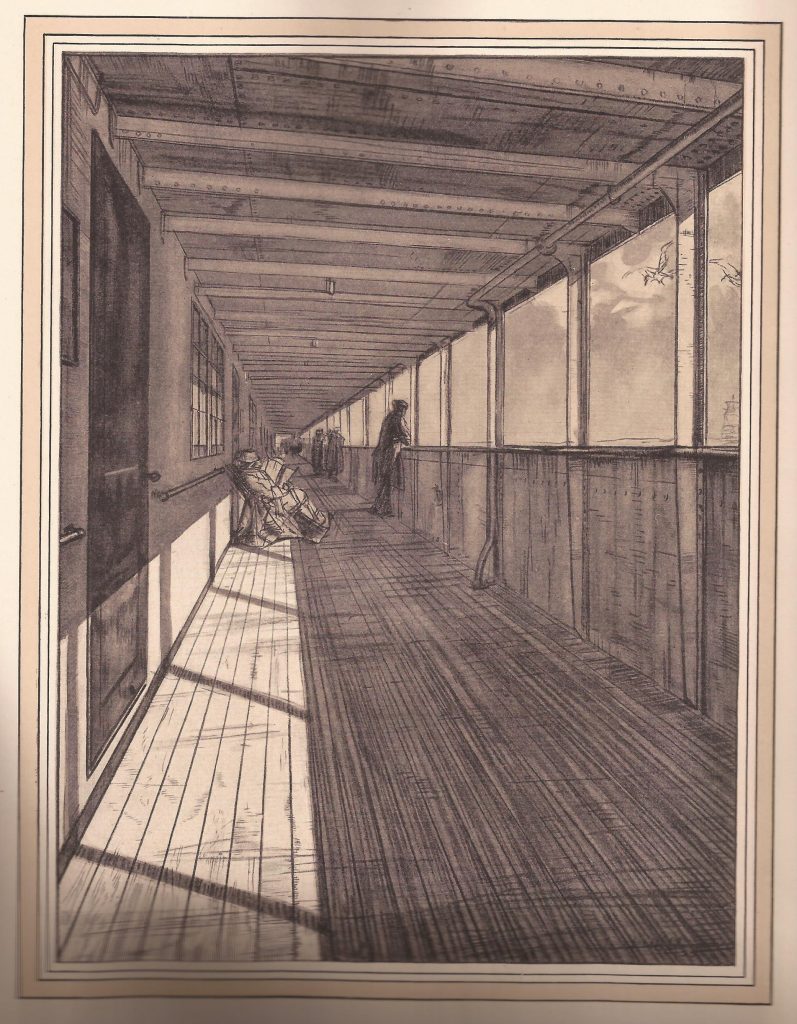
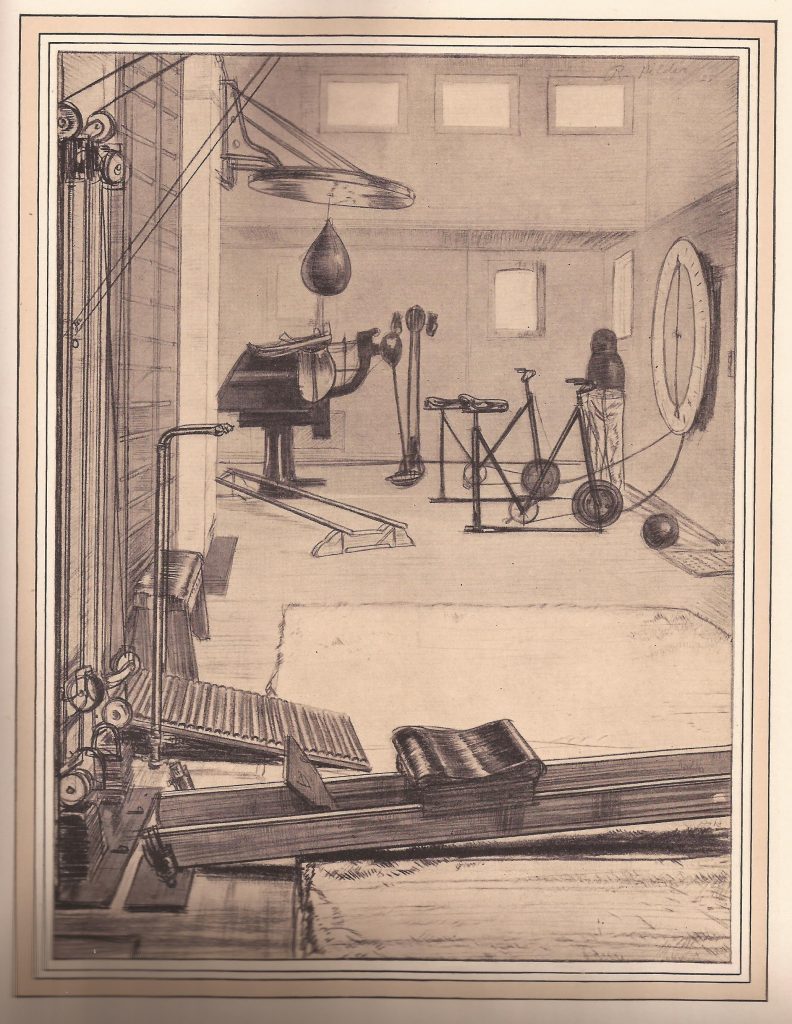
The Ascania had accommodation for nearly 520 cabin passengers. All her State Rooms were of the newest type and as an A Class liner; she had a greater proportion of single and two berth rooms, than any other liner of her size. There were a number of private suites tastefully furnished and decorated, each consisting of a bedroom, sitting room and bath room.
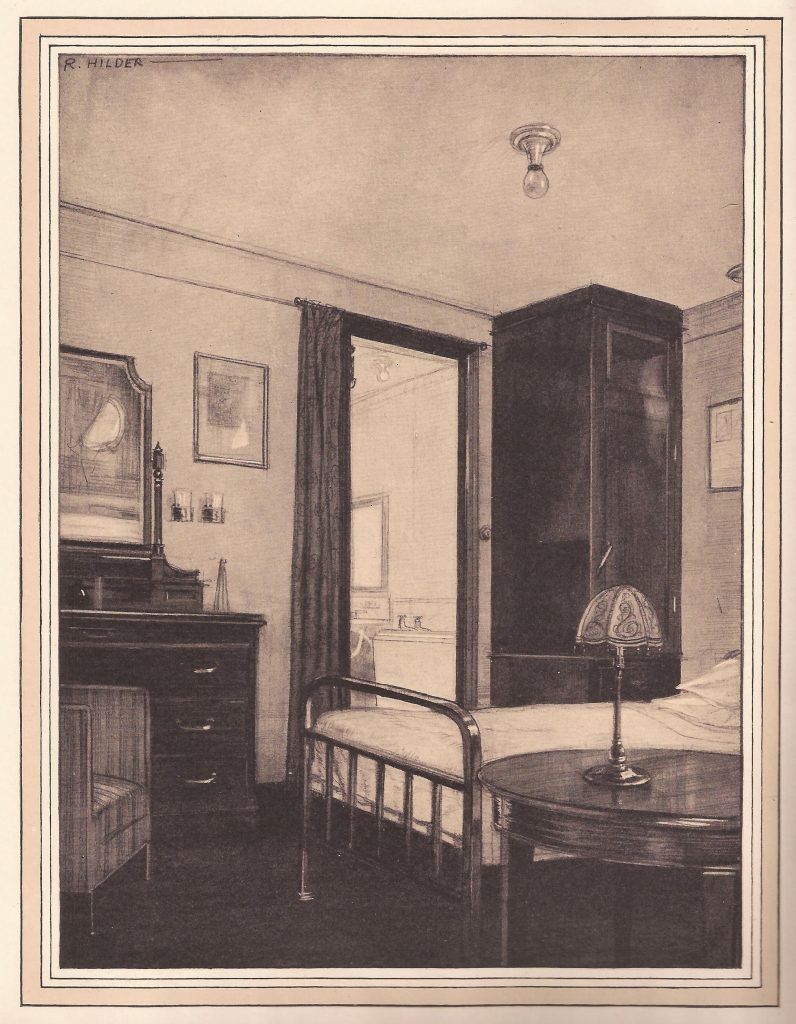
The ship also boasted a system of directional ventilation throughout, which was able to supply fresh air to every part of the accommodation, the flow of which could be regulated by the passenger.
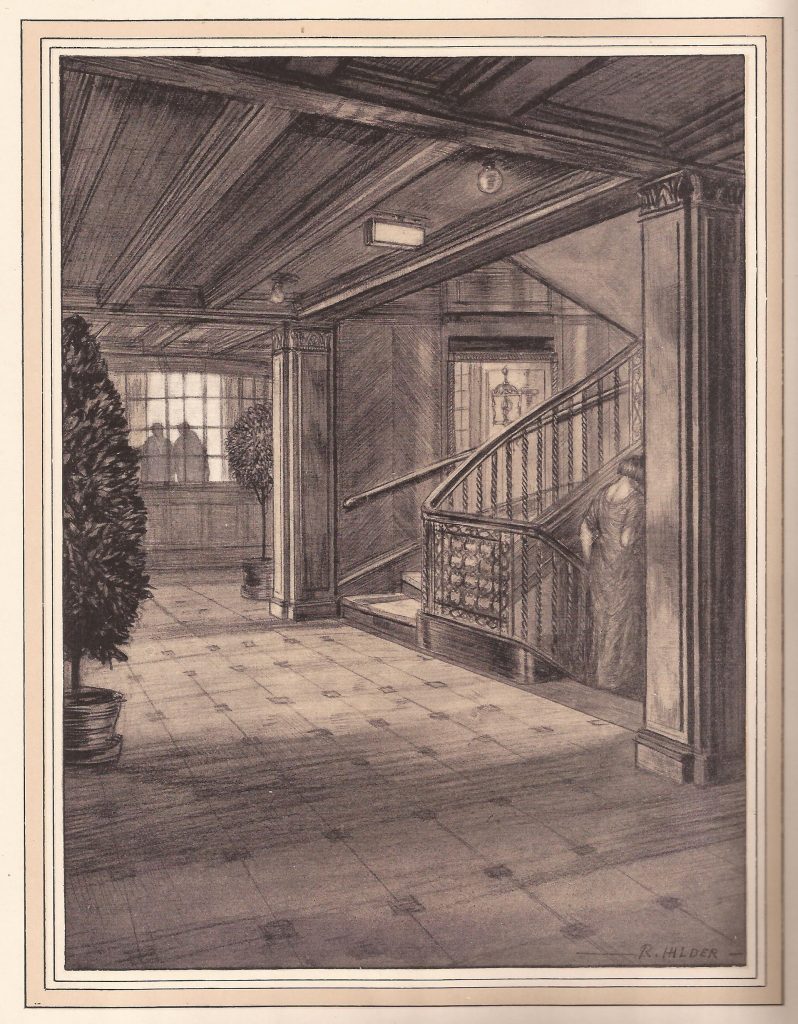
The Ascania was the first of the three to be launched and she took to the waters of the River Tyne at the Armstrong Whitworth shipyard on the 20th December 1923. Her fitting out, however was delayed and it was not until the 2nd May 1925 that she carried out trials on the delivery voyage from Newcastle to Southampton. She left Southampton on Friday 22nd May for a 12 day maiden voyage to Cherbourg, Queenstown, Quebec and Montreal. In July 1927 it was decided that the passenger accommodation should be more diverse and, as a result, the ship was refitted so that it could cater for three classes of passenger, cabin, tourist and third class.
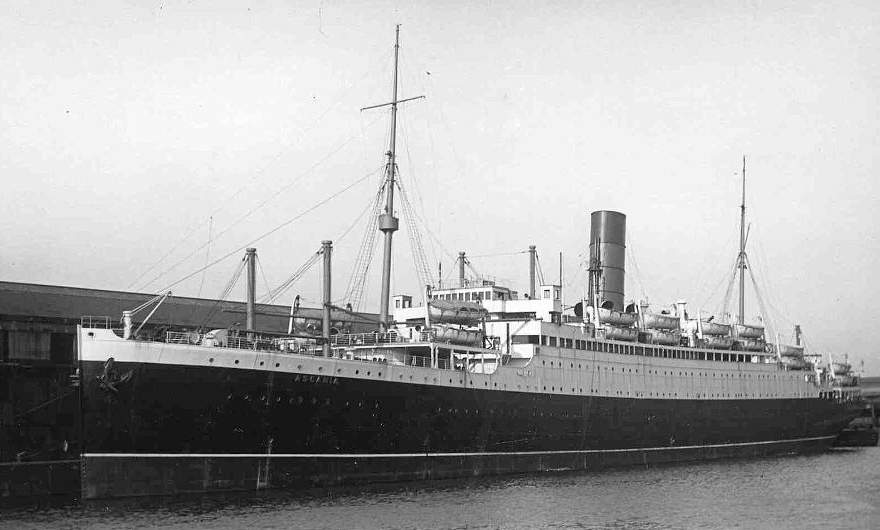
The RMS Ascania at the Cunard berth in Huskisson Dock, Liverpool
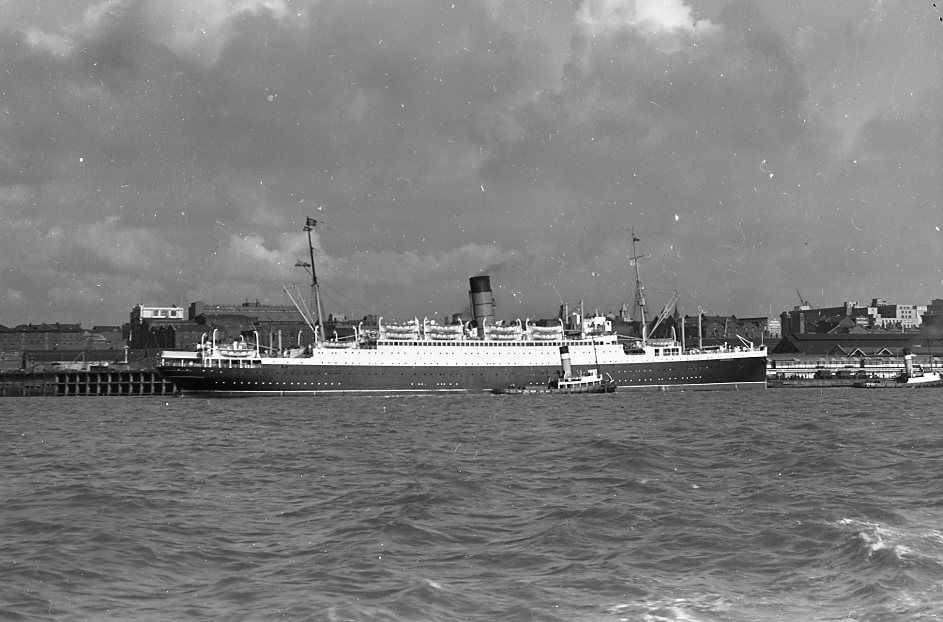
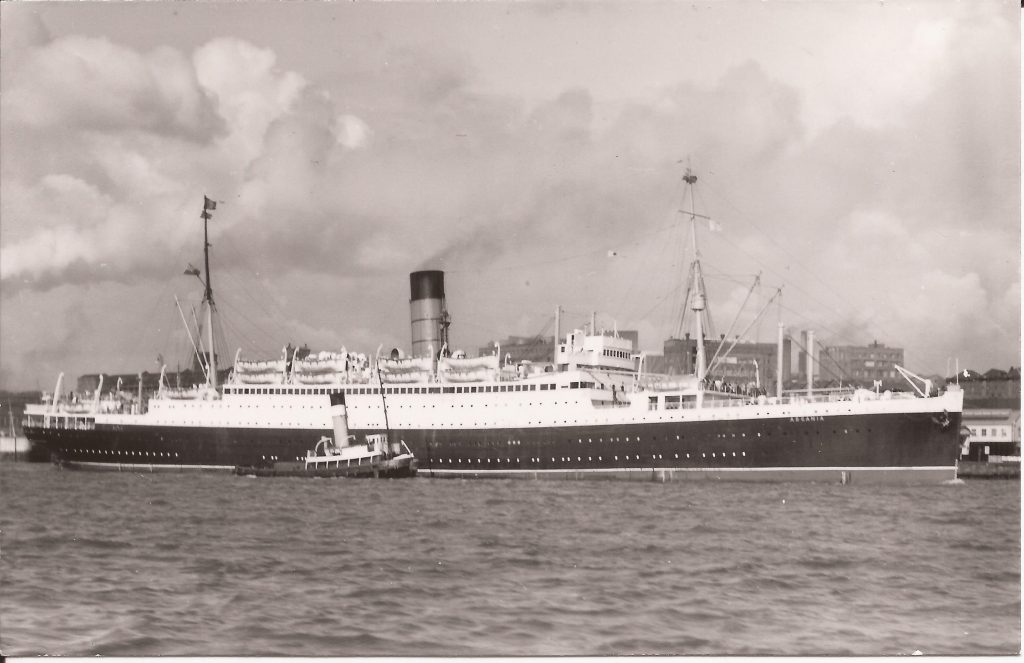

The RMS Ascania alongside Princes Landing Stage, Liverpool dressed with flags.
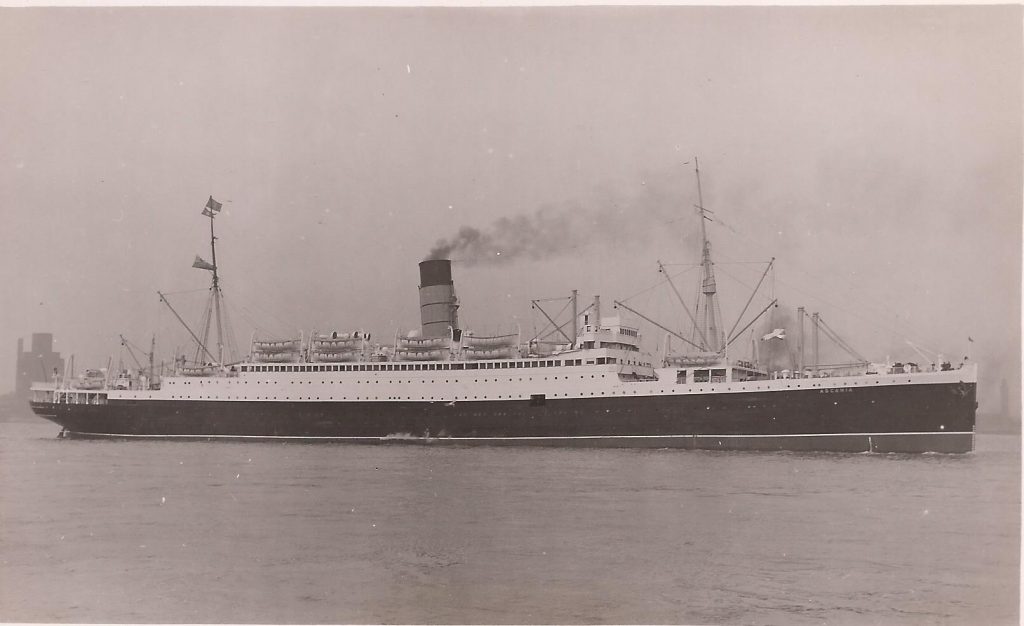
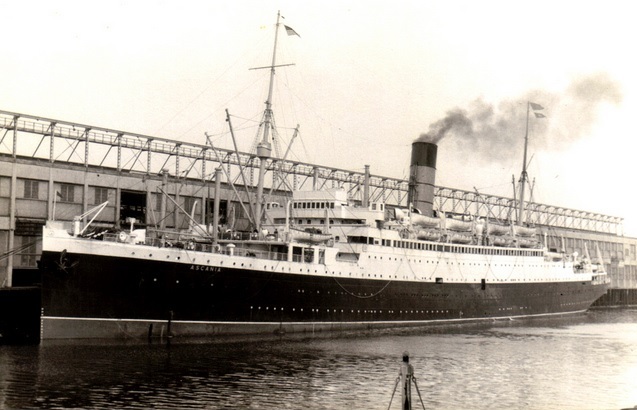
The RMS Ascania alongside the north side of Pier 90, New York
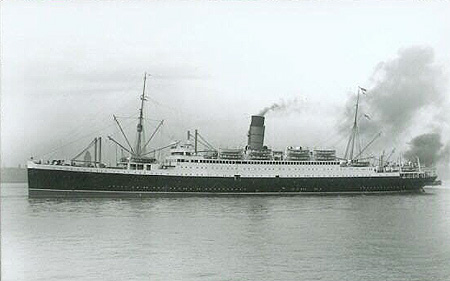
The RMS Ascania sometime in the late 1920’s

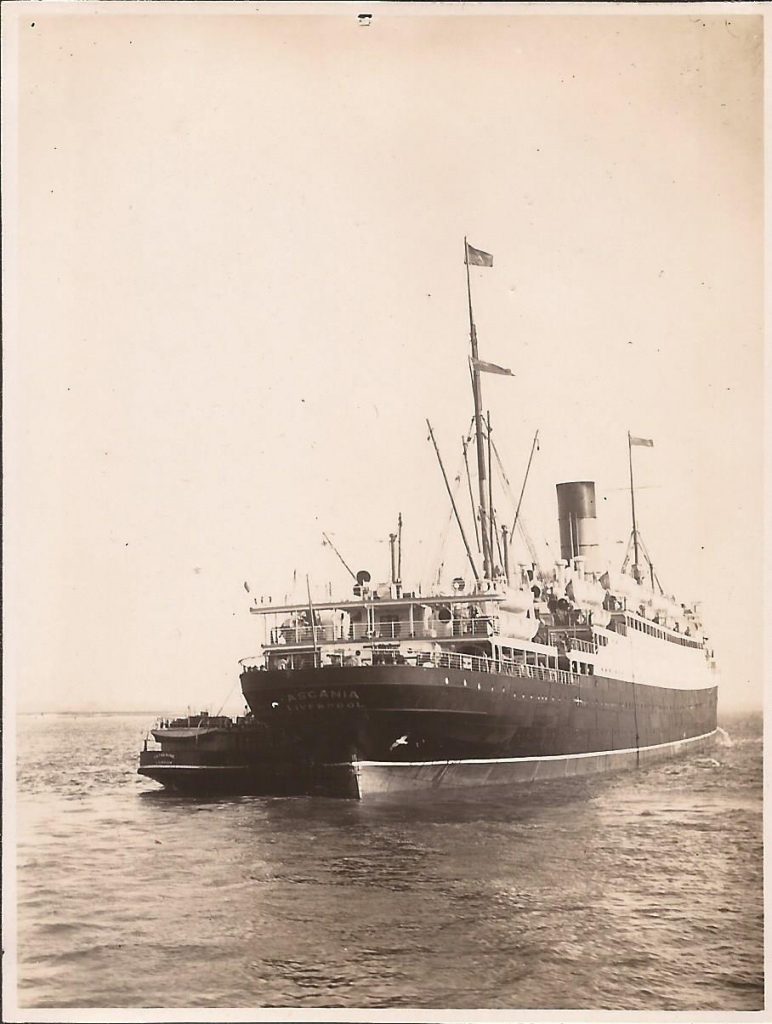
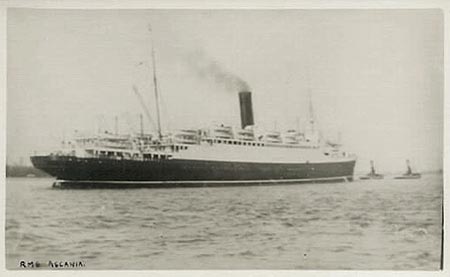
The RMS Ascania sometime in the late 1920’s

The Ascania’s deck photographed by an unknown passenger in winter
On the 3rd October 1934, the Ascania was homeward bound from Montreal and was steaming through one of the fiercest storms on the North Atlantic for some years, when at the height of the storm, she picked up SOS messages from the 4,000 ton British cargo steamer Millpool, 700 miles from the Labrador Coast, bound for Montreal from Danzig with a cargo of grain. The messages said that three of her 26 crew were injured and that the mainmast had fallen, stoving in the cargo hatches. She was taking in water and with her engine room flooded, she was sinking. The Ascania made for the position at full speed and during the night the signals from the Millpool grew fainter, until at 2 am the following day they ceased altogether. By dawn the Ascania had reached the spot and together with the Canadian Pacific ship Beaverhill, she started to search the area in an attempt to find wreckage and survivors, but with 80 mph winds, driving rain and huge seas there was no hope. The Millpool had floundered without any trace and even if her crew had managed to launch the lifeboat, it would not have survived long. After 12 hours the search was called off and the Ascania resumed her voyage, arriving in London on the 8th October.
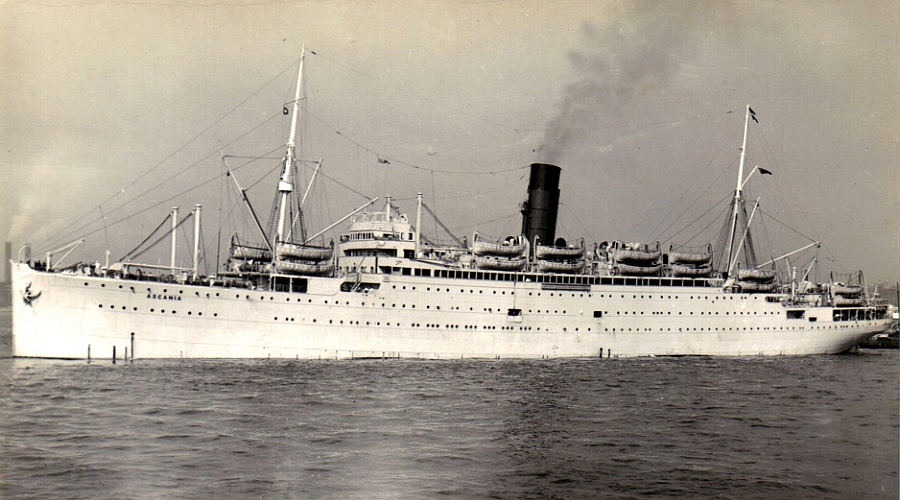
The RMS Ascania in her cruising white paint in 1930

The RMS Ascania in her cruising white paint in 1930
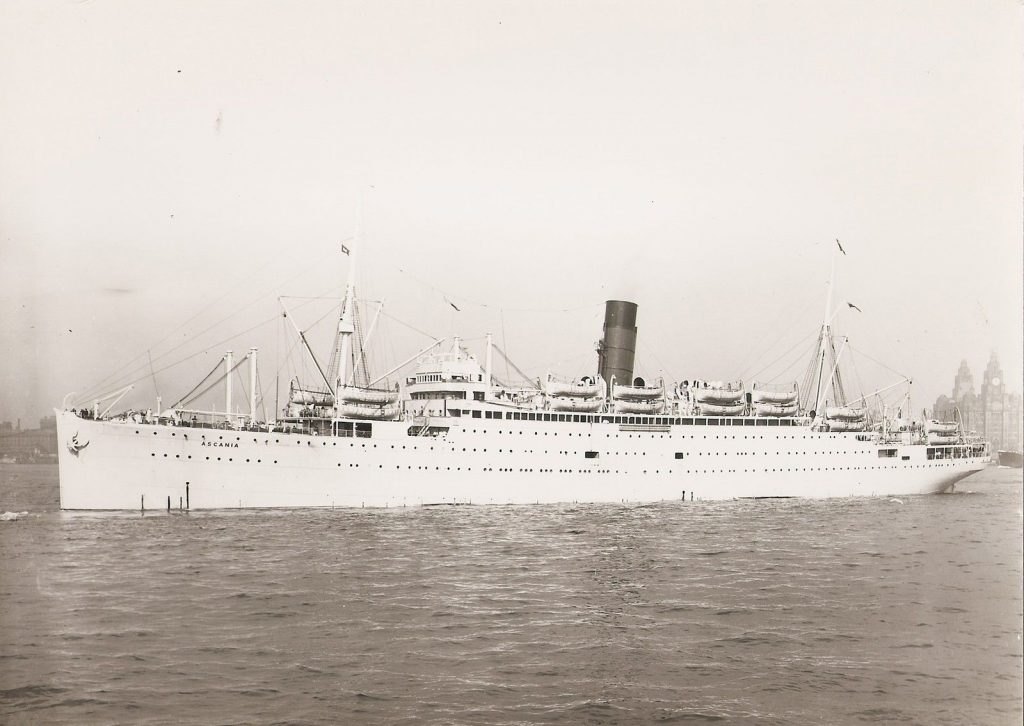
The RMS Ascania leaving Princes Landing Stage, Liverpool in 1930
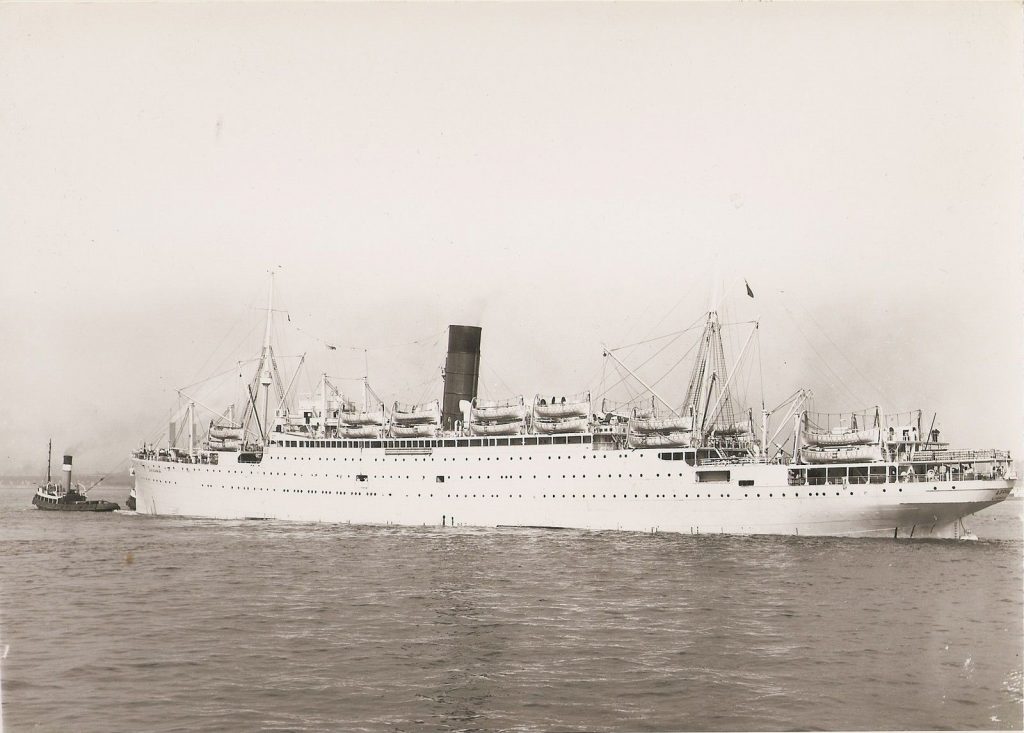
The RMS Ascania in her cruising white paint in 1930
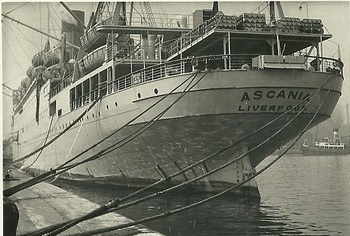
The RMS Ascania in her cruising white paint at Liverpool Docks in 1930
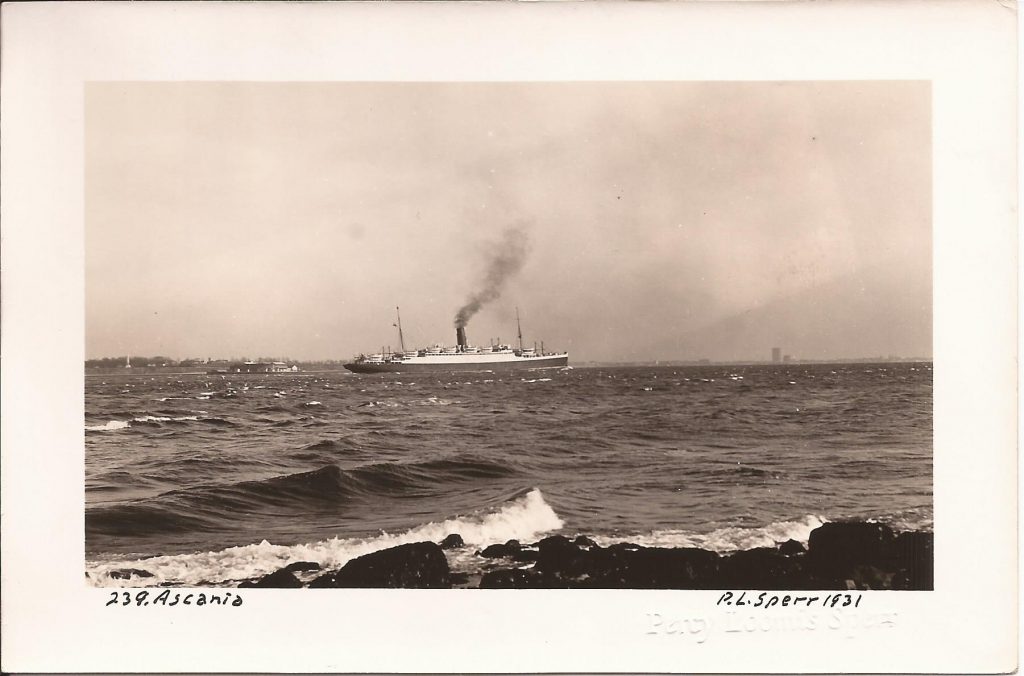
A Percy Loomis Sperr original photograph of RMS Ascania taken in 1931 departing from New York. Known as the official photographer for the City of New York from 1924 through to the early 1940’s, he was famous for capturing scenes of the city’s people, buildings and neighbourhoods. Amongst his collection of 30,000 photographs are several photographs of Cunard ‘A’ Class liners as they arrived or departed from the city’s port. The photograph is embossed with his name in the bottom corner.
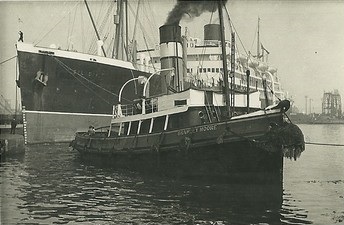
The RMS Ascania at Liverpool Docks in the late 1930’s
In the following month the Ascania was in collision with the Canadian Pacific cargo ship Beaverbrae, at Quebec, causing damage to the starboard side of her bridge and to her starboard propeller as she fouled the Beaverbrae’s anchor cable. After temporary repairs the Ascania was able to sail for London the next day and on her next outward voyage she went to the assistance of the Usworth, which was sinking in the mid-Atlantic.
The sea state was really unfit for boat work, but on the Ascania’s arrival her master, Captain James Bisset, RNR, decided to make an attempt. After pumping out some fuel to leeward, he took the Ascania to within 100 feet of the Usworth’s stern and sent away a thirty-foot lifeboat, manned by one officer and ten A.B.s. The boat managed to reach the Usworth and take off the remaining nine crew members.
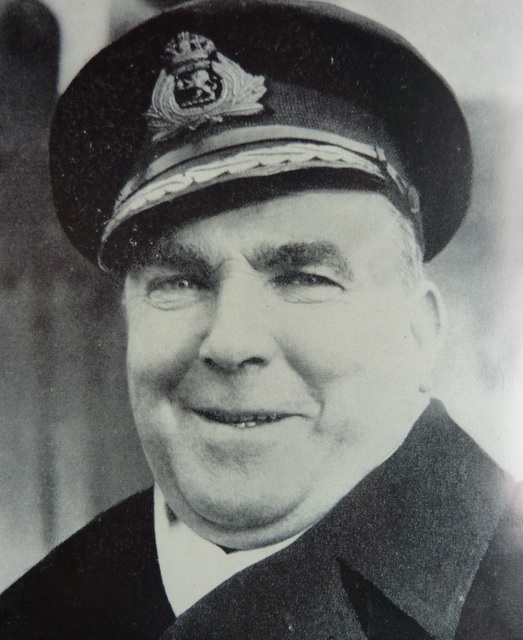
The Captain of the RMS Ascania James Bisset, RNR in 1934
The Ascania was making twice the leeway of the swamped Usworth and had to make a wide circle of the sinking vessel to get into a position suitable for recovering the lifeboat. The boat made it back alongside the Ascania but was rising and falling twenty feet in the heavy seas, and getting the men back on board was an extremely hazardous operation, but eventually they made it without loss.
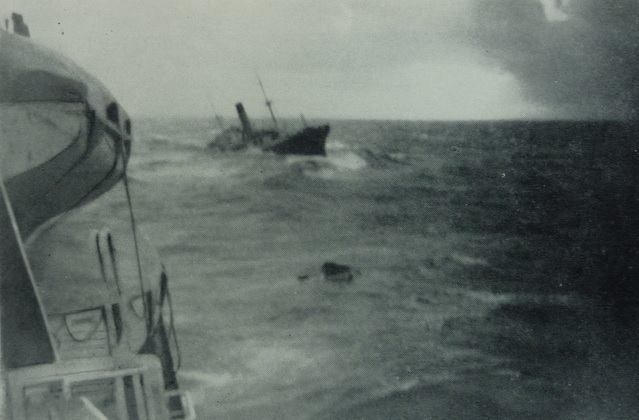
The Usworth and one of the Ascania‘s lifeboats, photographed here from the Ascania by an unknown passenger
This was one of the epic rescues of the North Atlantic, and on the Ascania’s return to the UK there were civic receptions. The boat’s crew and Captain Bisset were all presented with Lloyd’s Silver Medal for gallantry at sea, and for the remarkable handling of the ship.
In October, the Ascania suffered some trouble to her main propulsion machinery which resulted in a delayed voyage to Montreal.
In July 1938 she was in more serious trouble, this time in the St Lawrence River off Bic Island, 150 miles below Quebec City and opposite Rimouski. She had left Quebec for London on Friday 1st July with 400 passengers and cargo, which included $300,000 worth of bullion. The following day a sharp jar was felt throughout the ship as Ascania struck the submerged Alcide Rocks, near Bic Island.
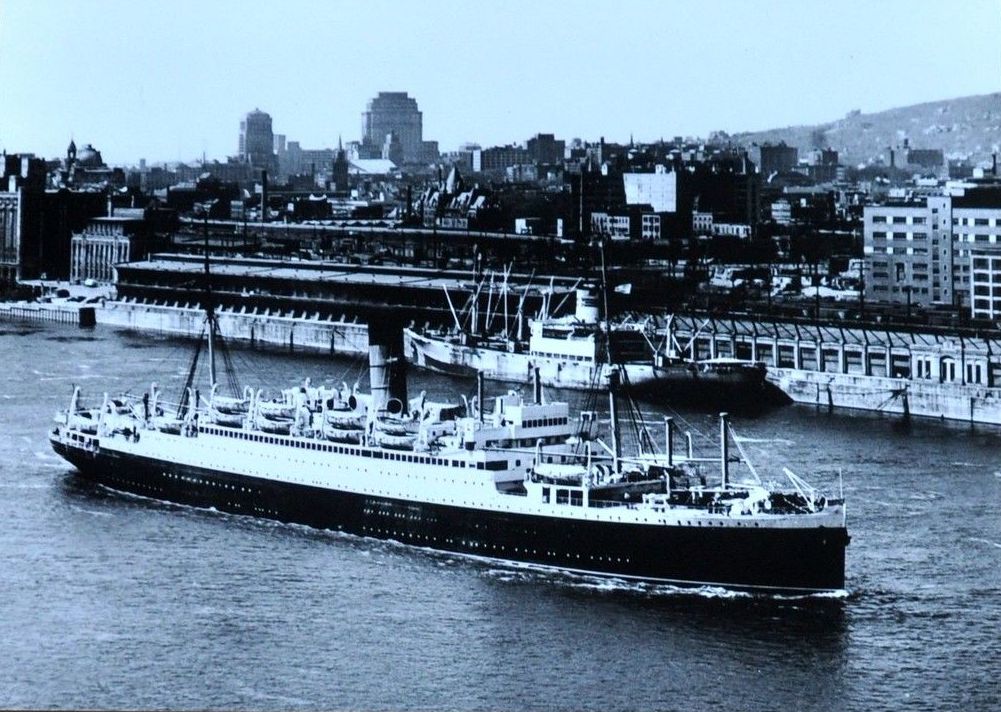
The RMS Ascania in the St Lawrence River in 1938
She suffered damage to the port side forward, which flooded the four forward holds and lost her port propeller. Not only was she down by the head, but she was stuck fast on the rocks. She was not refloated until Wednesday the 6thJuly and the following day, with assistance of tugs, she was back in Quebec. Her passengers had been taken to Rimouski in tenders and most were transferred to the Canadian Pacific liner, Montclare, with a few travelling to New York to board the Queen Mary. After her cargo had been discharged, the Ascania was dry-docked at Lauzon and it was the 26th August before she was able to leave Quebec for London. She left again for Canada on the 10th September that year.
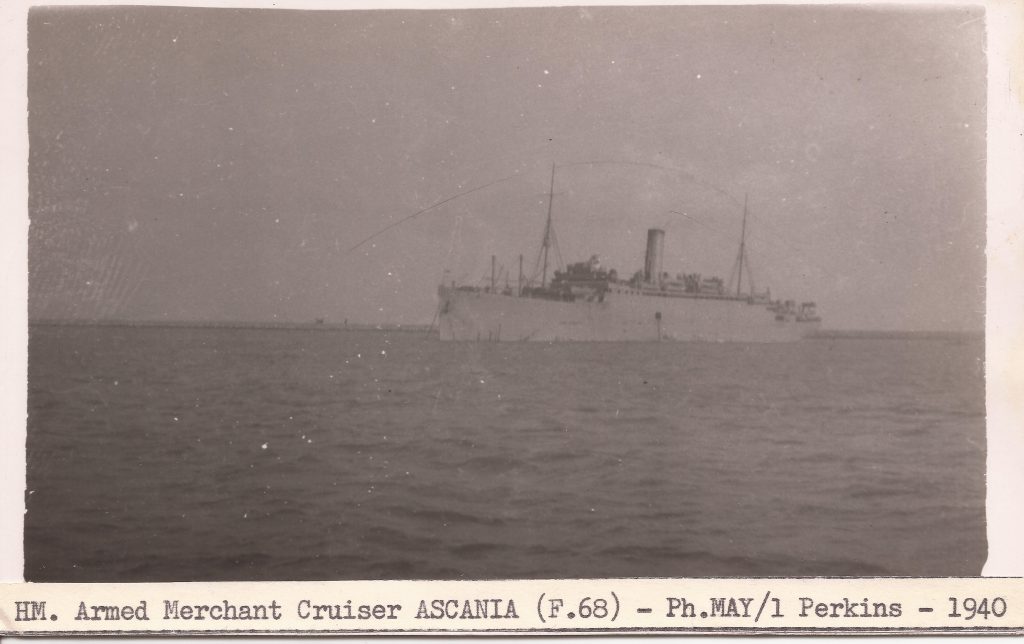
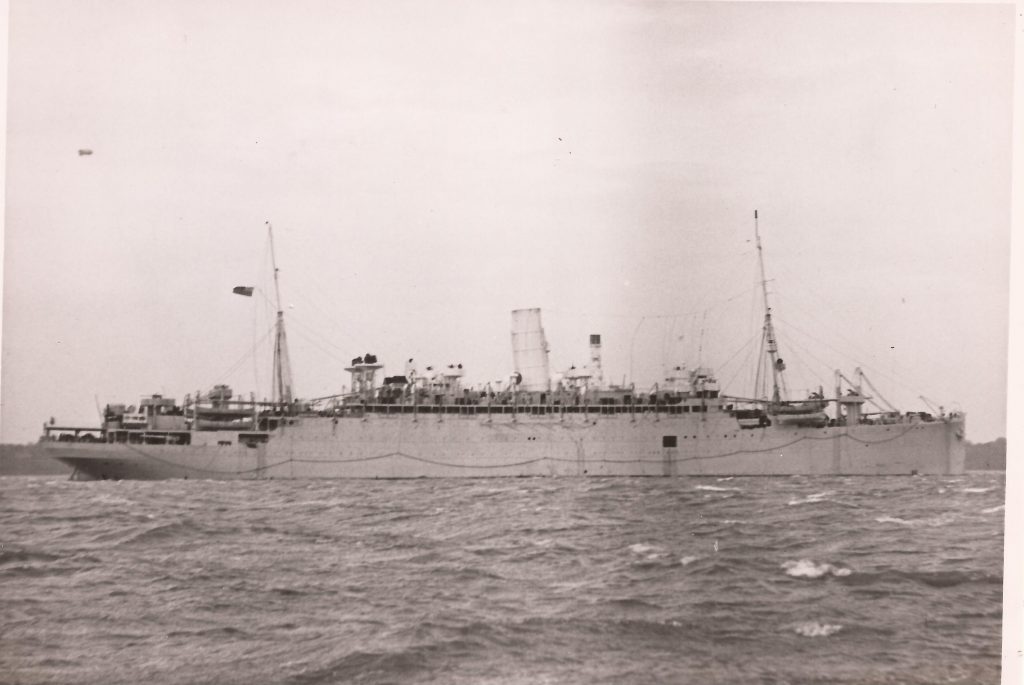
HMS Ascania on the 21st April 1943 entering Southampton.
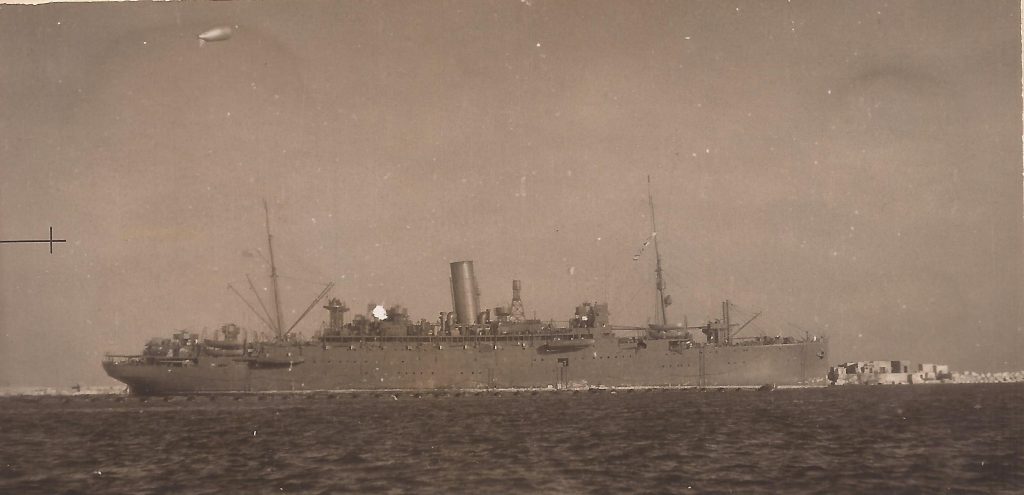
At the outbreak of World War II the Ascania was commissioned as an armed merchant cruiser, on the 16th October 1939 and joined the 3rd Battle Squadron at Halifax, and served in this role until late 1941. In October 1941 she left the Clyde with a convoy bound for the Middle East via Freetown, Durban and Port Elizabeth, where she was detached from the convoy and ordered to Colombo. From here she was ordered south through the dangerous waters of the Indian Ocean via Freemantle and Melbourne to Auckland in New Zealand. She remained on this station for some months, patrolling the Pacific waters to Suva with HMNZS Monowai. This was a very active theatre of war at that time, with the Japanese advancing southwards.
In August 1942 the Ascania left New Zealand for the UK, sailing via Panama, up the east coast of the USA and across the Atlantic in convoy to Southampton where she was paid off and underwent conversion to an infantry landing ship (LSI). The purpose of these ships was to carry the bulk of the invasion force to a beachhead where they would be transferred to assault landing craft (carried on the LSI’s) for the final run into the beaches. In this role the Ascania was involved in the invasion of Sicily, Salerno and in 1944, the Anzio landings.
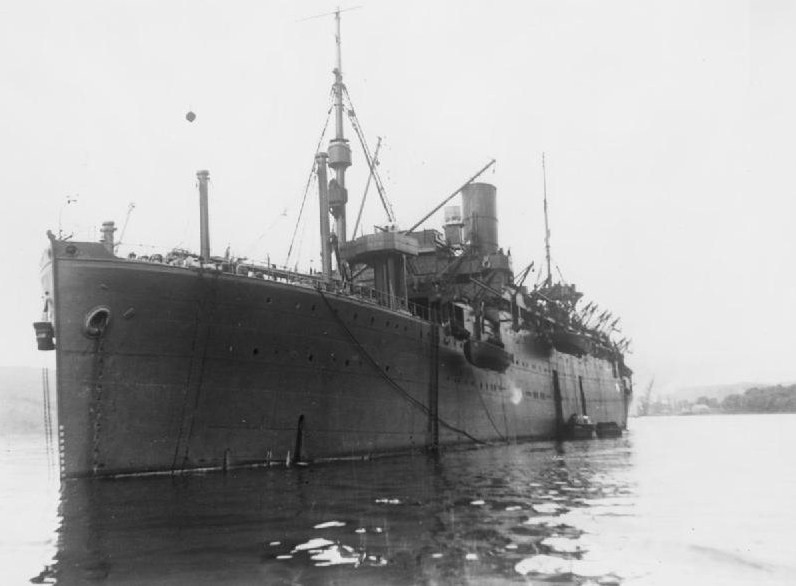
HMS Ascania in 1944
Later in 1944 necessity meant that she was used as a troop transport, a role which she continued to serve until September 1947. One of her last roles was to repatriate 115 Gibraltarians who had been evacuated to Northern Ireland during the war. Also on board at that time was the Governor of the colony.
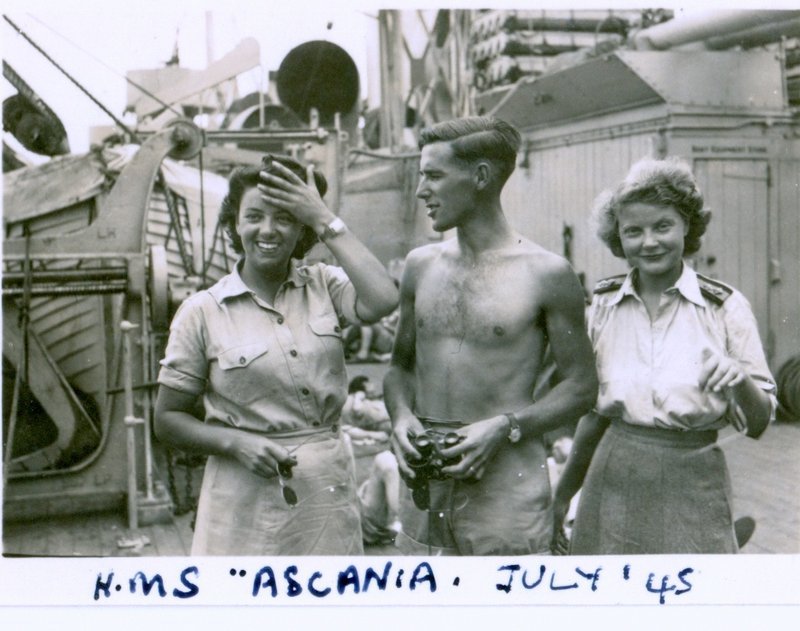
Nurse Joan Westwood (on the left) aboard HMS Ascania in July 1945 on route to Sicily (Copyright Joan Westwood)
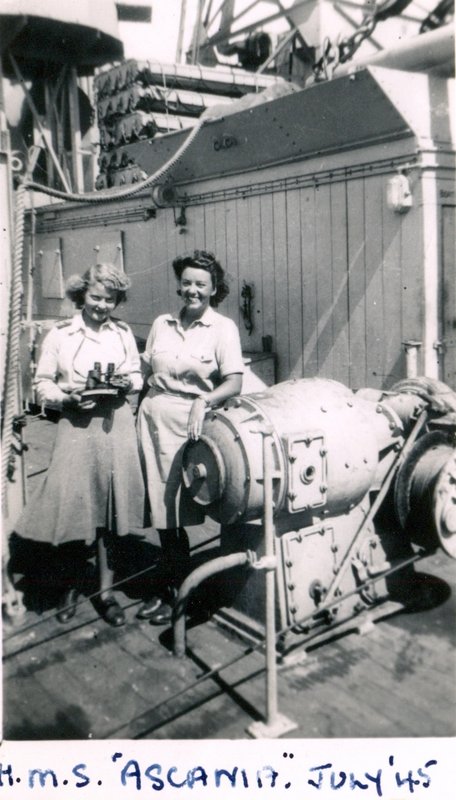
Another photograph of Nurse Joan Westwood (on the right) taken on the same voyage. (Copyright Joan Westwood)
In early September 1947 she returned to Cunard and was given a partial reconditioning at Liverpool. She was the only ship of the Cunard ‘A’ Class to return to the company’s service and three months later, on the 20th December 1947, she made her first post-war voyage, from Liverpool to Halifax. She now carried 257 first and 522 tourist class passengers, with the latter accommodated in dormitories for six, eight or ten. Even the first class cabins were fitted with berths for two, four or six passengers and the austere conditions were justified at the time because of the heavy demand by emigrants to Canada.
At the end of 1949 the Ascania was sent to Alexander Stephen & Sons’ yard at Linthouse for complete reconditioning. She returned to service on the Liverpool to Quebec and Montreal service on 21st April 1950, carrying a full complement of 198 first-class passengers and 498 in tourist class, plus a crew of 367.
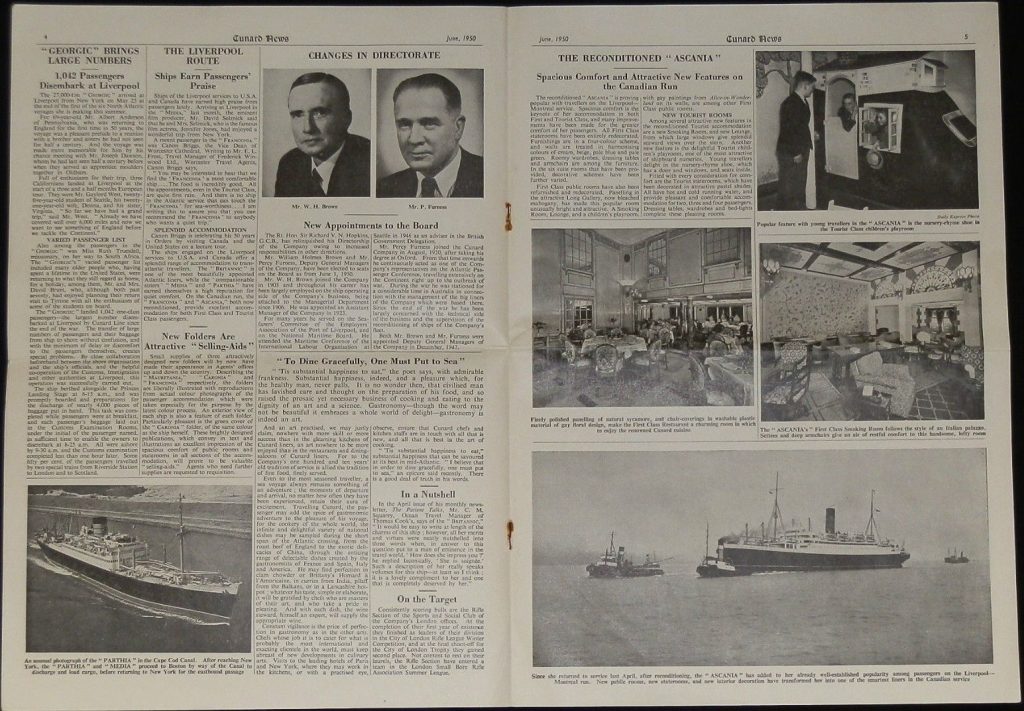
The June 1950 “Cunard News”
The following extract is from the “Cunard News”, dated June 1950. The article is titled ‘The Reconditioned Ascania’ and describes the spacious comfort and attractive new features on the Canadian run.
The reconditioned Ascania is proving popular with travellers on the Liverpool to Montreal service. Spacious comfort is the keynote of her accommodation in both first and tourist class and many improvements have been made to the greater comfort of her passengers. All First Class staterooms have been entirely redecorated. Furnishings are in a four colour scheme and walls are treated in harmonising colours of cream, beige, pale blue and pale green. Roomy wardrobes, dressing tables and armchairs are among the furniture. In the six suite rooms that have been provided, decorative schemes have been further varied.
First Class public rooms have also been refurnished and redecorated. Panelling in the attractive Long Gallery, now bleached mahogany, has made this popular room unusually bright and attractive. A Smoking Room, Lounge and children’s playroom, with gay paintings from Alice in Wonderland on its walls are among other First Class public rooms.
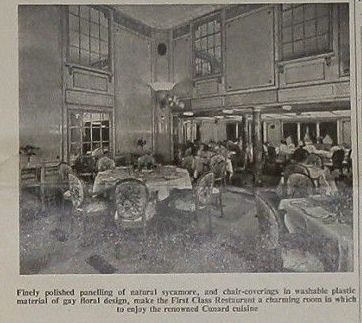
The First Class Restaurant in 1950
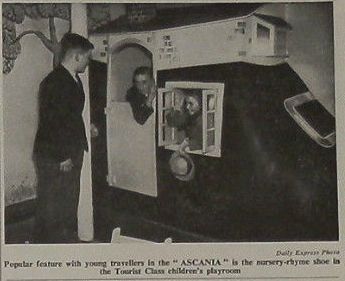
The children’s Playroom in 1950
Among several attractive new features in the reconditioned Tourist accommodation are e new Smoking Room and a new Lounge, from which large windows give splendid seaward views over the stern. Another new feature is the delightful Tourist children’s playroom, one of the most attractive of shipboard nurseries. Young travellers delight in the nursery rhyme shoe, which has a door and windows and seats inside.
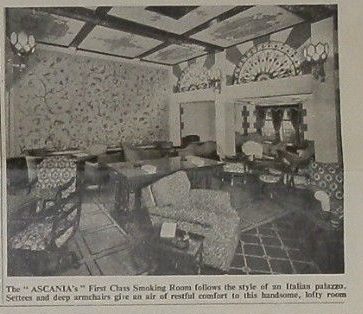
The First Class Smoking Room in 1950
Fitted with every consideration for comfort are the Tourist staterooms, which have been decorated in attractive pastel shades. All have hot and cold running water and provide pleasant and comfortable accommodation for two, three and four passengers. Dressing tables, wardrobes and bed lights complete these pleasing rooms.
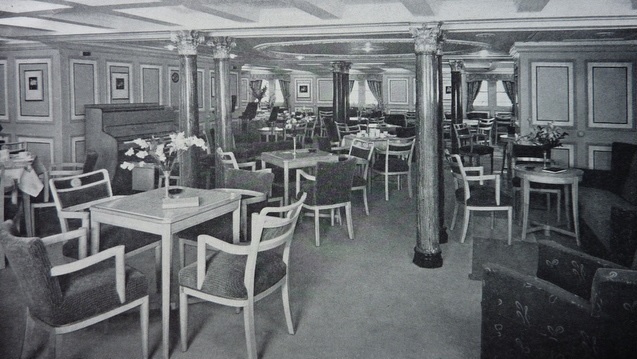
The Tourist Class Lounge in 1950
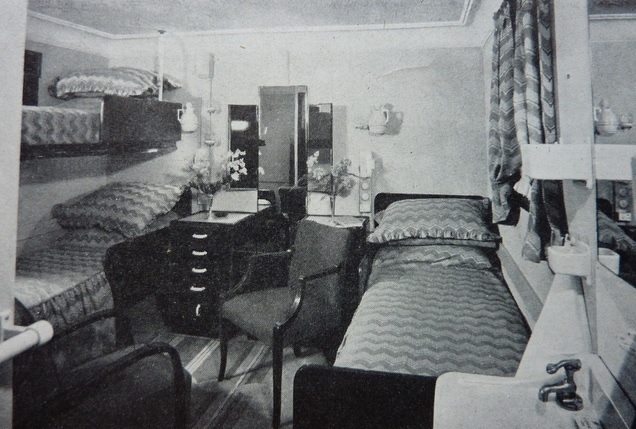
A First Class cabin in 1950
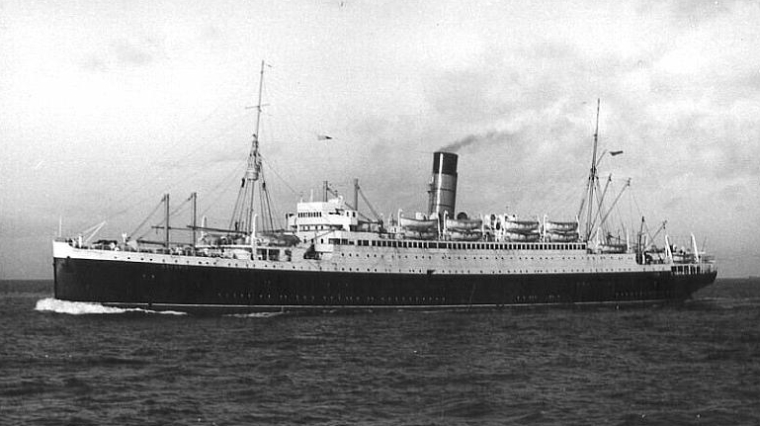
The RMS Ascania sometime in the early 1950’s
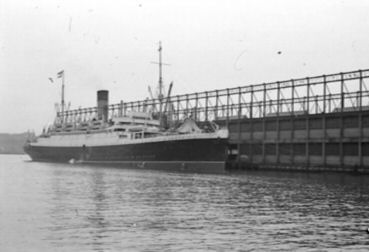
The RMS Ascania docked at her North River pier, New York harbour, New York City, December 1954.
The following is taken from a 1950’s colour Cunard brochure printed to publish the newly refurbished Ascania.
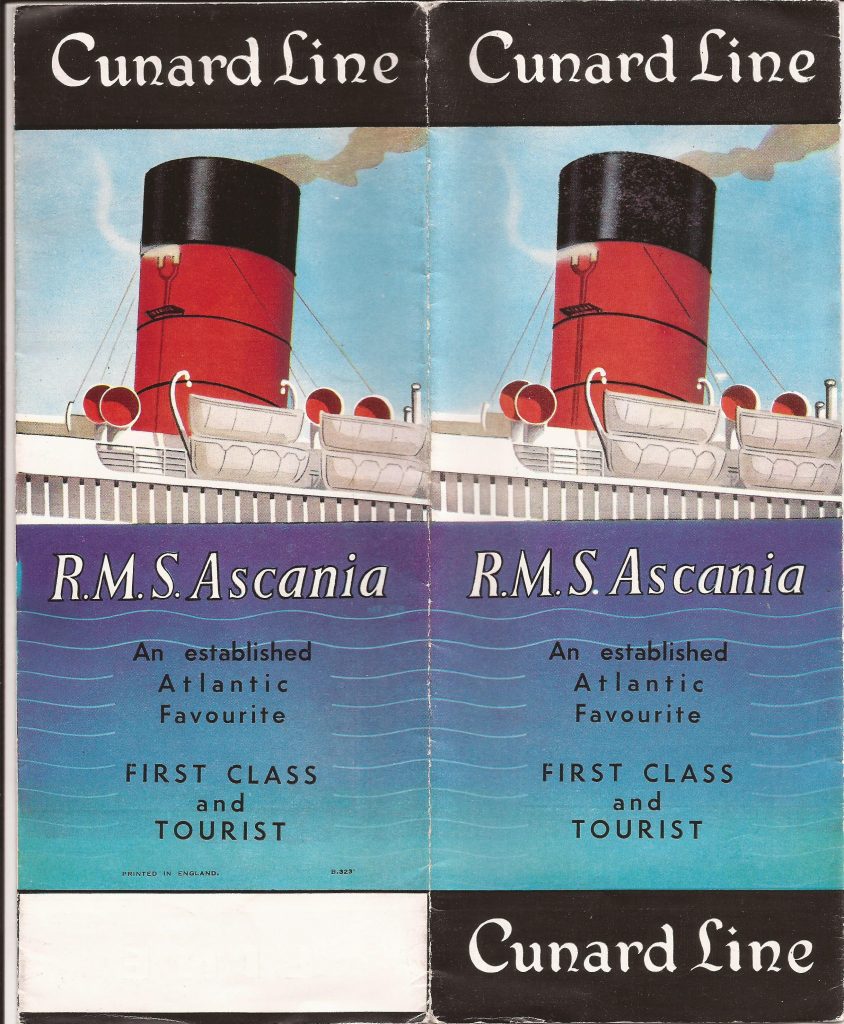
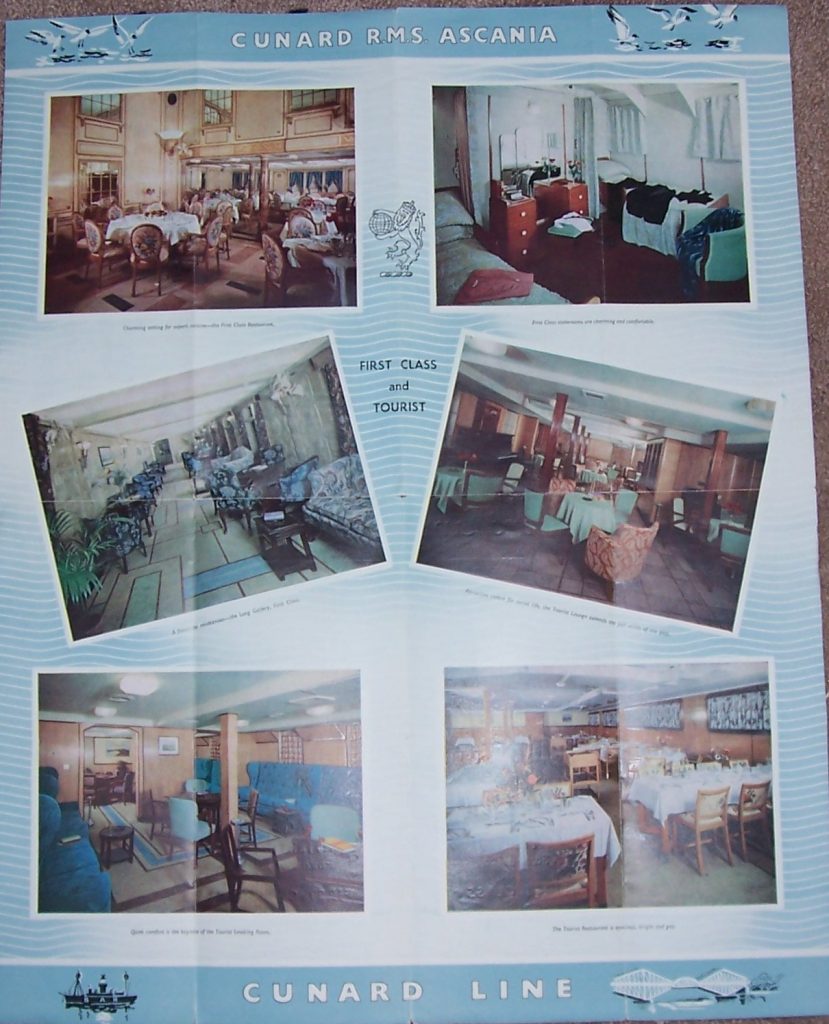
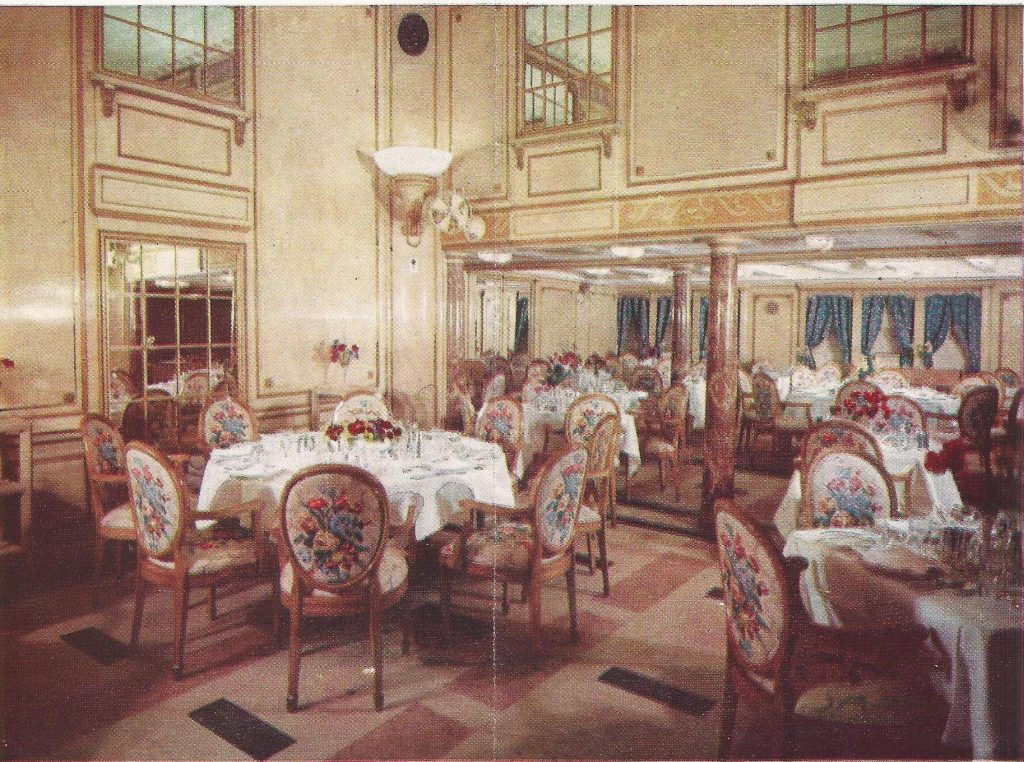
Charming setting for superb cuisine – the First Class Restaurant
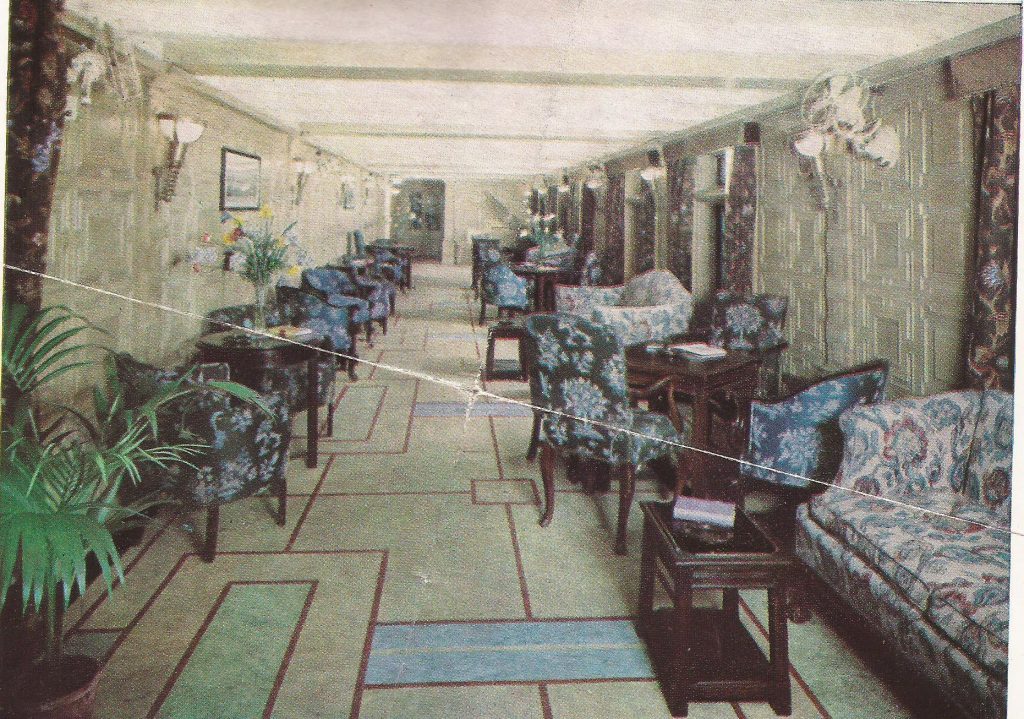
A favourite rendezvous – the Long Gallery, First Class
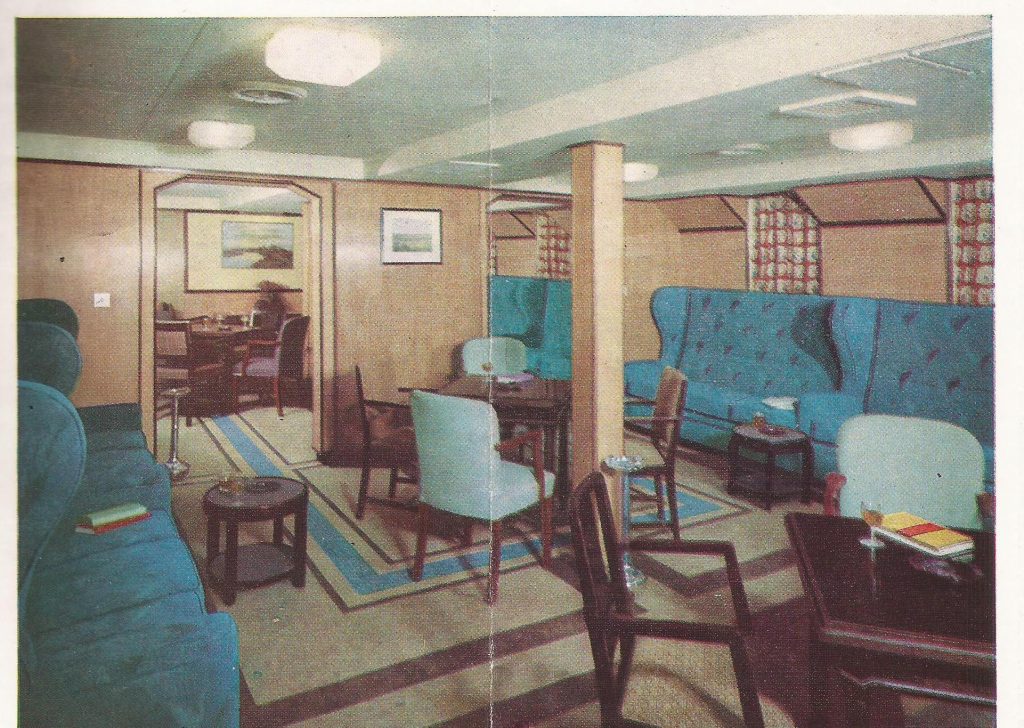
Quiet comfort is the keynote of the Tourist Smoking Room
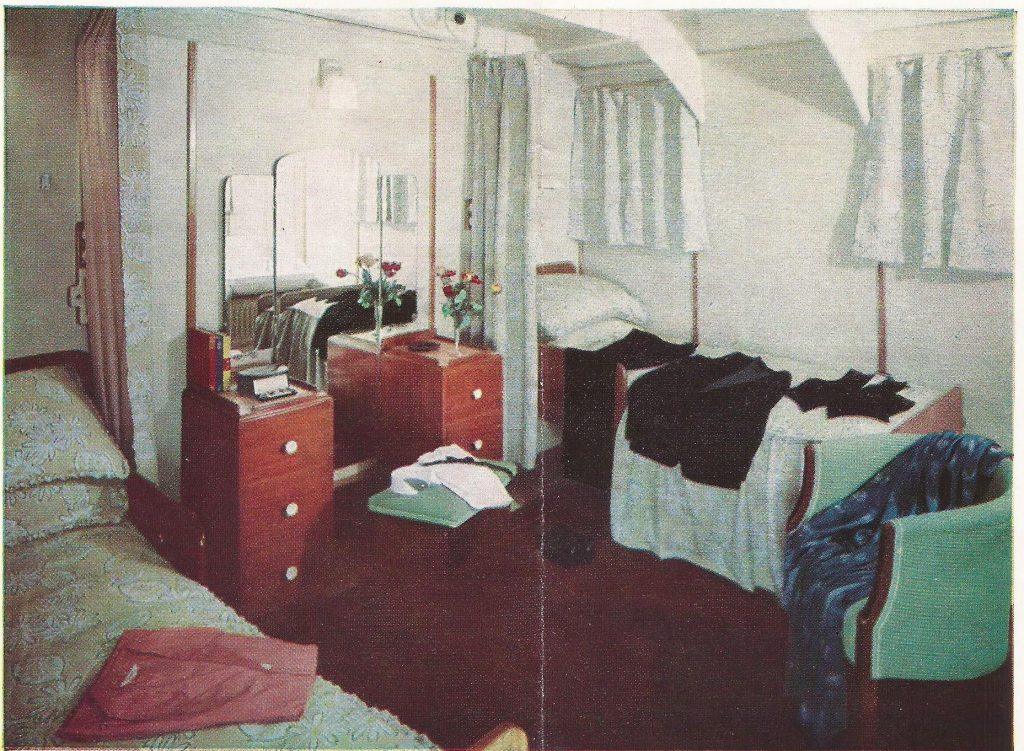
First Class staterooms are charming and comfortable
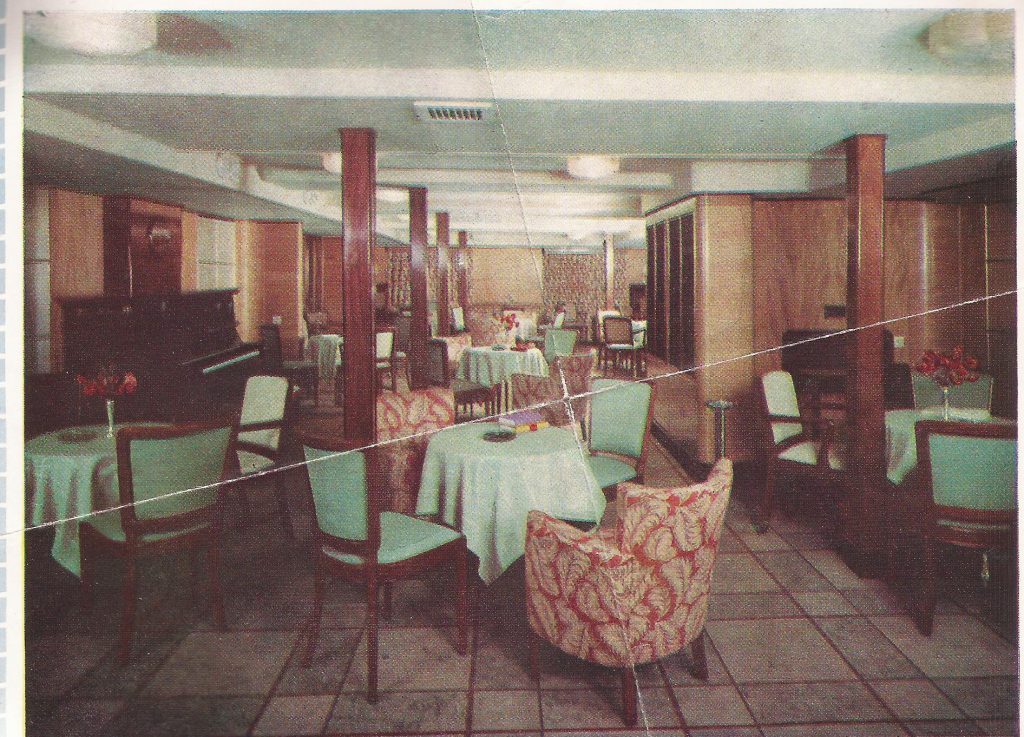
Attractive centre for social life, the Tourist Lounge extends the full width of the ship
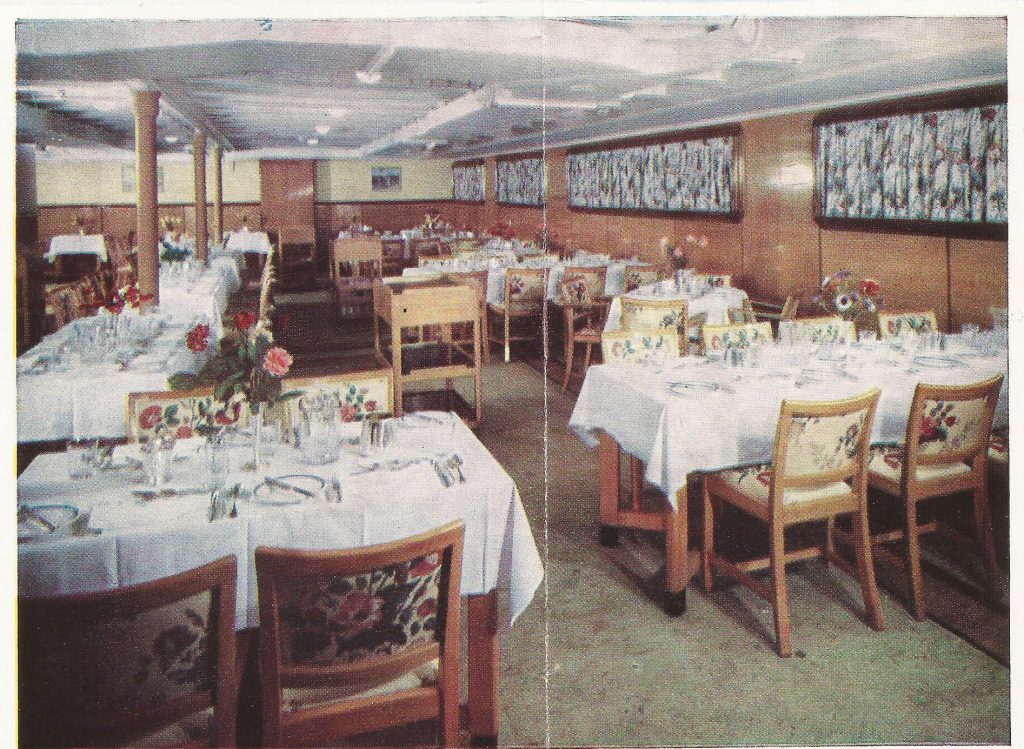
The Tourist Restaurant is spacious, bright and gay
First class public rooms are situated on the lengthy Promenade deck, flanked on either side by a sheltered promenade. They include a lounge which, with its marble fireplace and furnishings in green and beige, is a particularly charming room, long gallery, where mullioned windows and panelled walls create an Elizabethan atmosphere, a pleasant drawing room that is a splendid example of the Colonial Adam style and a handsome and lofty smoking room, designed in the style of an Italian palazzo, notable for its fine canopied fireplace and large, embossed panel, which embodies a design in crewel embroidery.
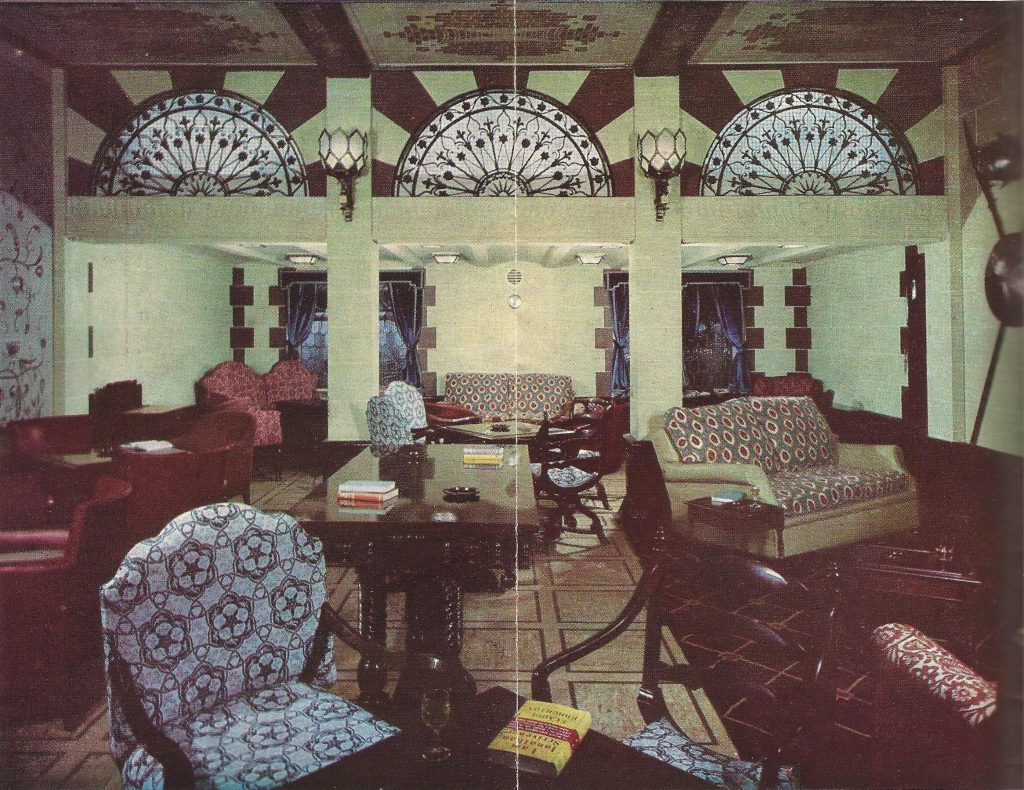
The splendid, Italian style, First Class Smoking Room
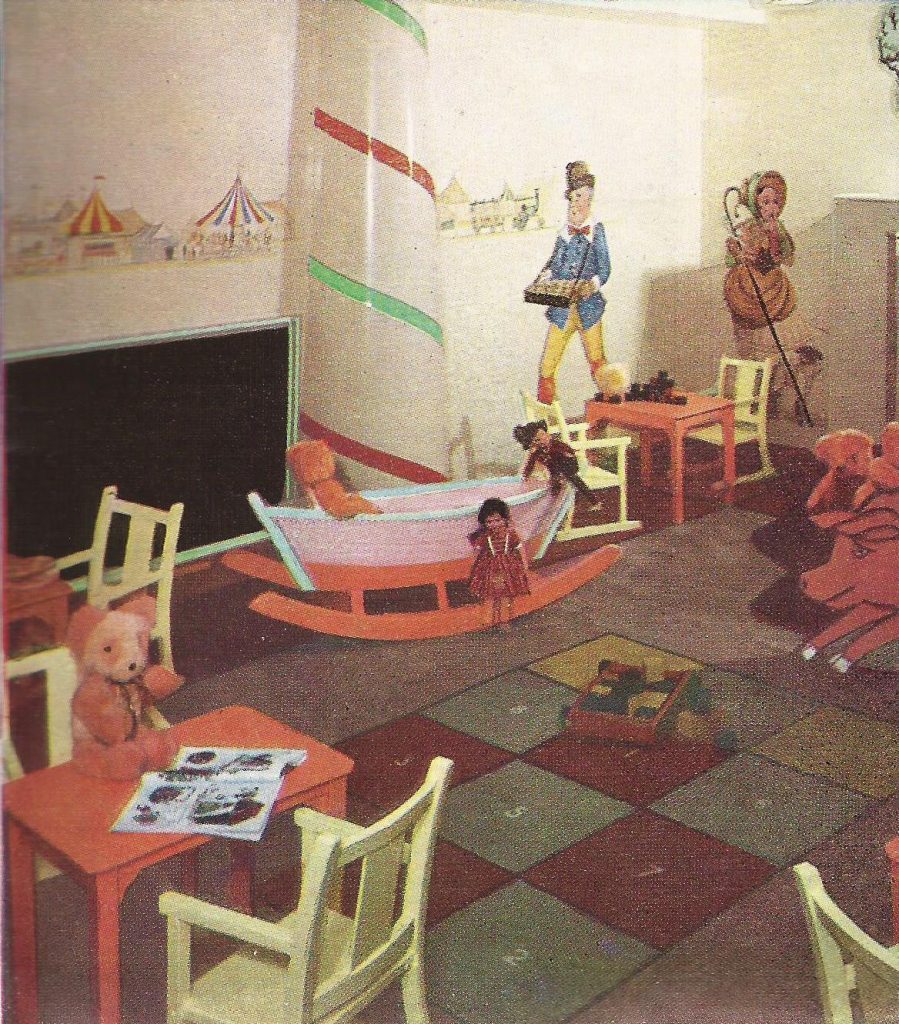
The delightful Tourist Children’s Playroom
An established favourite with Atlantic travellers, the “Ascania” now provides really comfortable accommodation for First and |tourist Class passengers. Reconditioning has made her one of the smartest of Atlantic liners and many new features have been introduced for the greater comfort of her passengers.
Public rooms charmingly decorated and furnished deck spaces for promenading, playing games or simply relaxing in Atlantic ozone, comfortable, attractive staterooms, these are features of both classes of accommodation and of course, there’s the Cunard cuisine and service.
Perfect setting in which to enjoy, with healthy appetite that Atlantic air creates, the expert cookery of Cunard chefs, is the “Ascania’s” First Class restaurant. Natural sycamore panelling and chair covering of floral design are delightful features of this spacious room. The Tourist Restaurant, panelled in polished natural oak and with chairs upholstered in brightly designed coverings, is another particularly pleasant room in which to enjoy renowned Cunard cuisine.
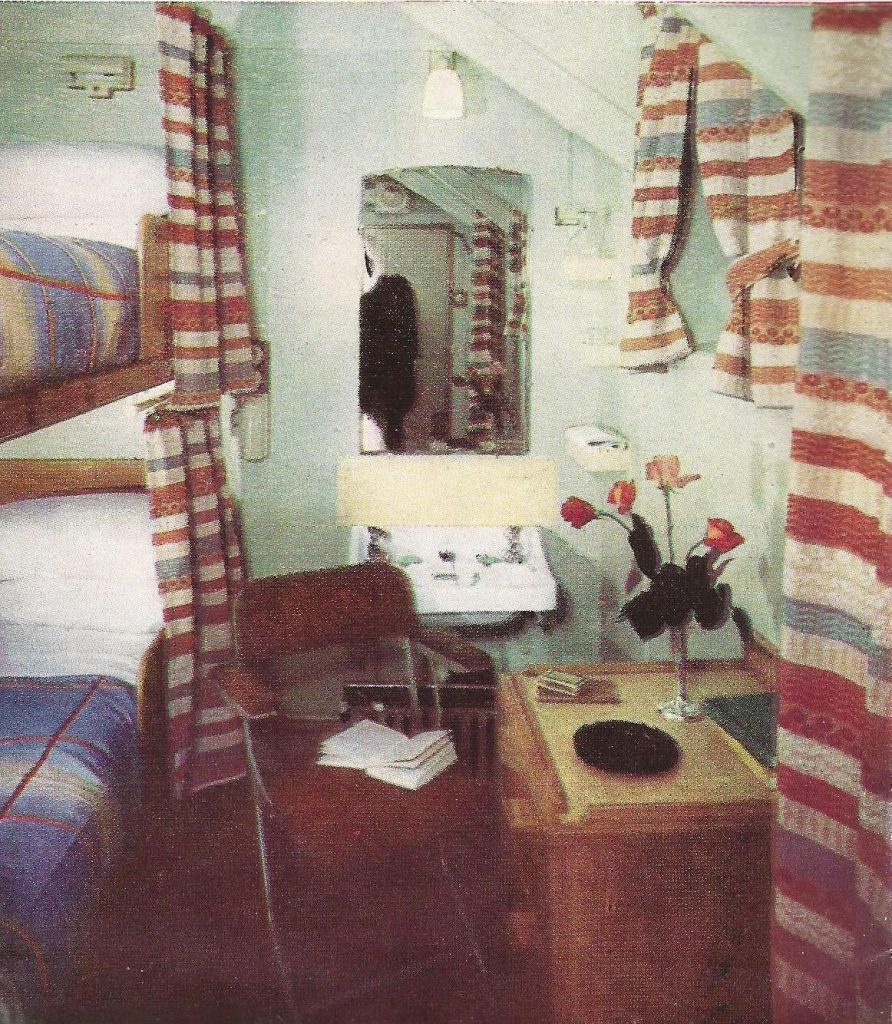
One of the attractive Tourist Staterooms
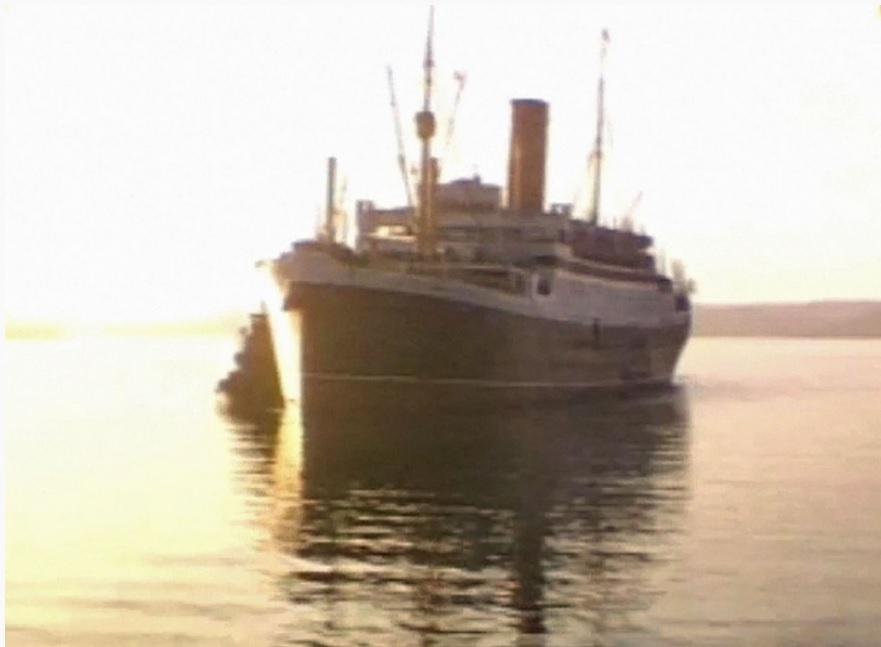
The Ascania arriving in Halifax, March 1953. (Copyright Randy Smye)

In March 1954, RMS Ascania was diverted from New York to Boston because of a dock strike in New York. She was the first liner for 20 years to berth in Boston and is seen here alongside the Commonwealth Pier on the 9th March.
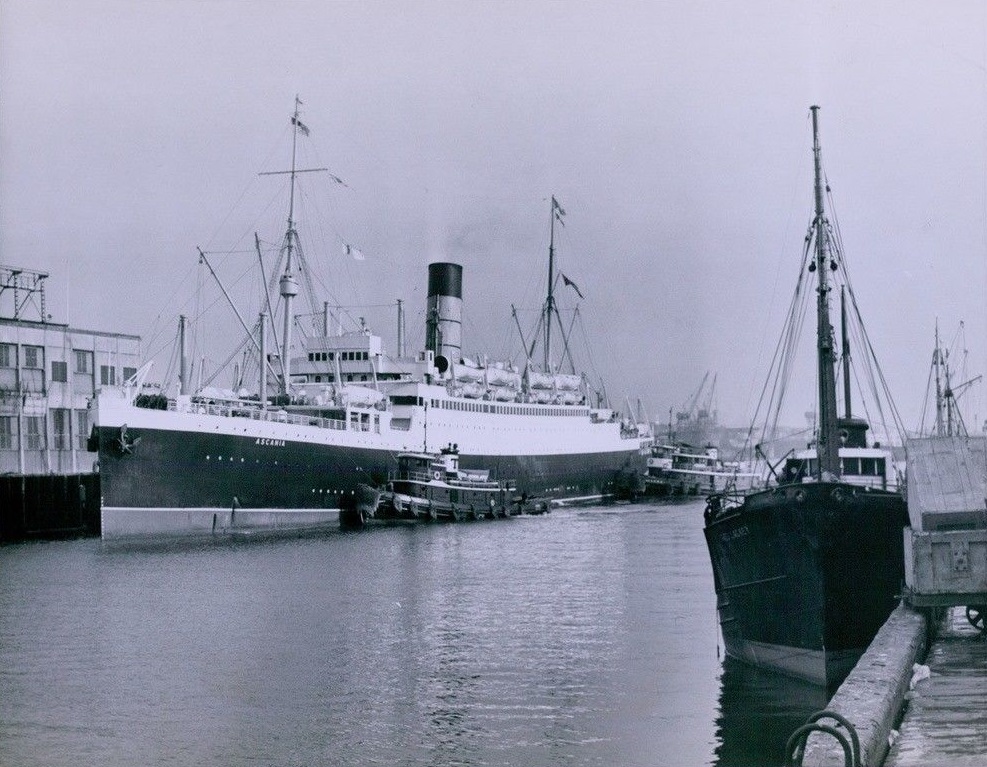
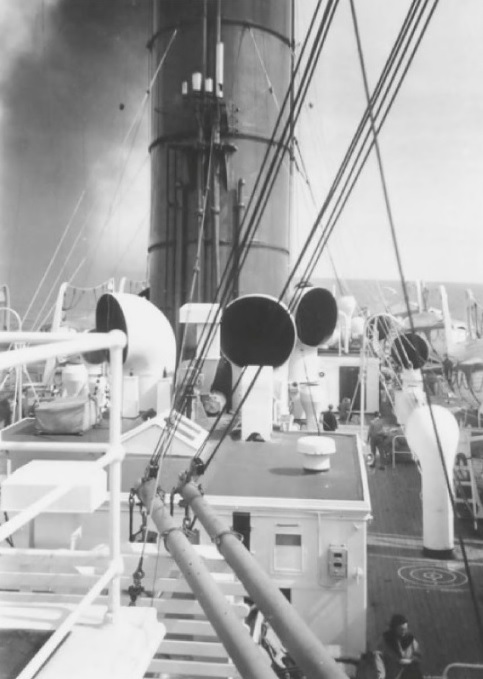
The Ascania continued on Cunard’s Liverpool to Montreal service until September 1955 when she was transferred to Southampton, leaving the new Saxonia and Ivernia to maintain the Liverpool route. Just over a year later, in October 1956, it was announced that the Ascania was to be withdrawn from service the following month and would be disposed of soon afterwards. She completed her last Cunard voyage on the 16th November 1956.
Thirty three years old, the Ascania was still a smart, sturdy-looking ship, but was quite simply outclassed by the new Cunard ships coming into service at the time. She had spent almost her entire working life on the North Atlantic, and had come through it with flying colours.
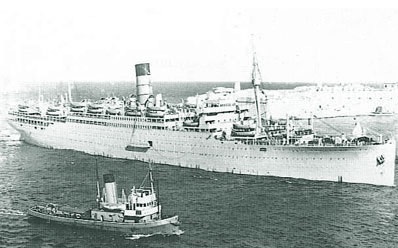
RMS Ascania in Malta during the Suez Crisis in 1957
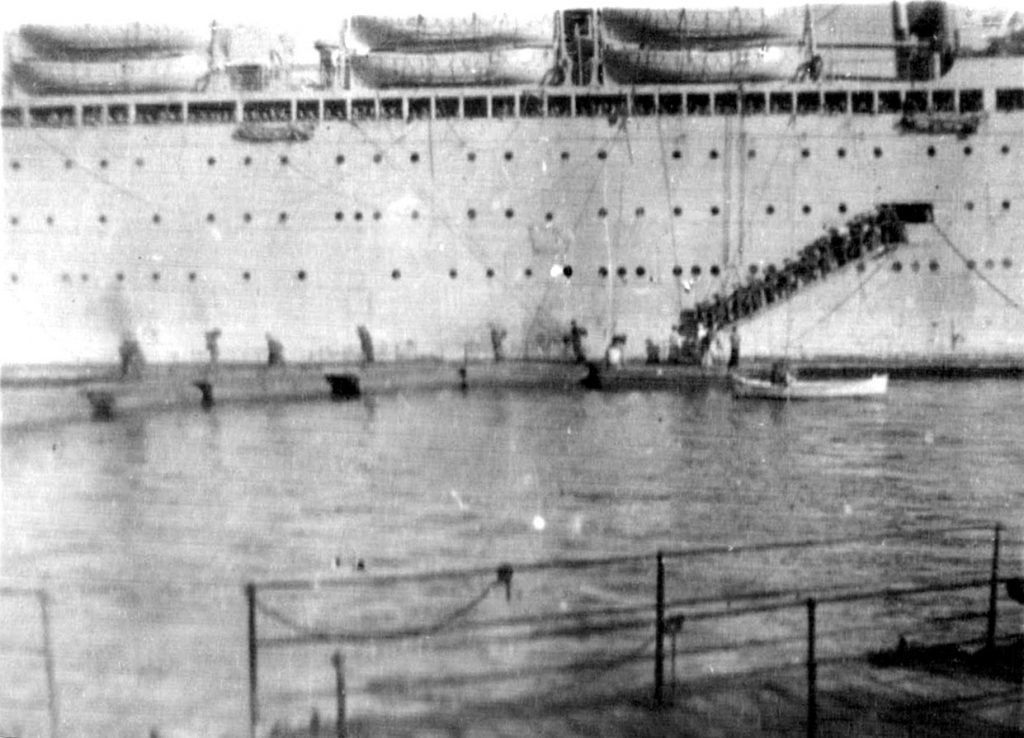
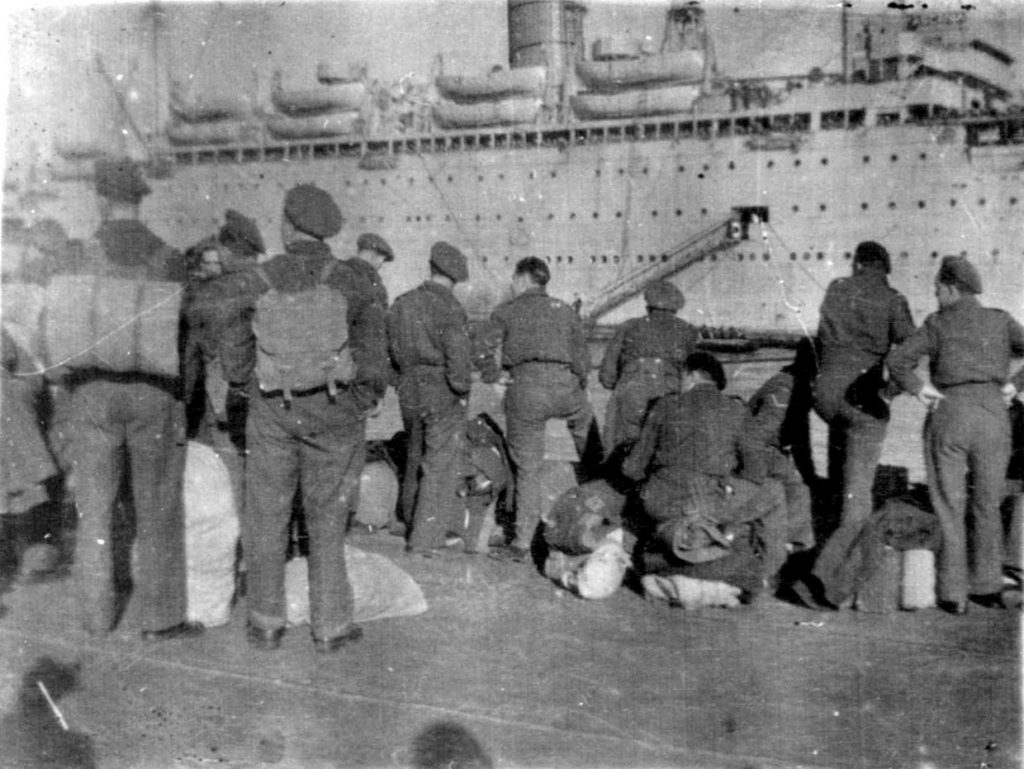

RMS Ascania in 1957
However, before she was sold, the Suez Crisis gave her a short reprieve when she was used for two trooping voyages between Southampton and Malta, but she was sold to the British Iron & Steel Corporation in December 1956 and allocated to J. Cashmore of Newport for demolition. The Ascania arrived at the Blaina Wharf in the River Usk at Newport, Monmouthshire, on the 1st January 1957 and about five months later the job was completed. The hulk floated until the last day, when the remains of the engine room compartment, probably 300 tons, was removed at low tide.
A series of photographs capturing the Ascania’s last voyage as she arrives at the Blaina Wharf, Newport, Monmouthshire on the 6th January 1957, to be broken up for scrap.
